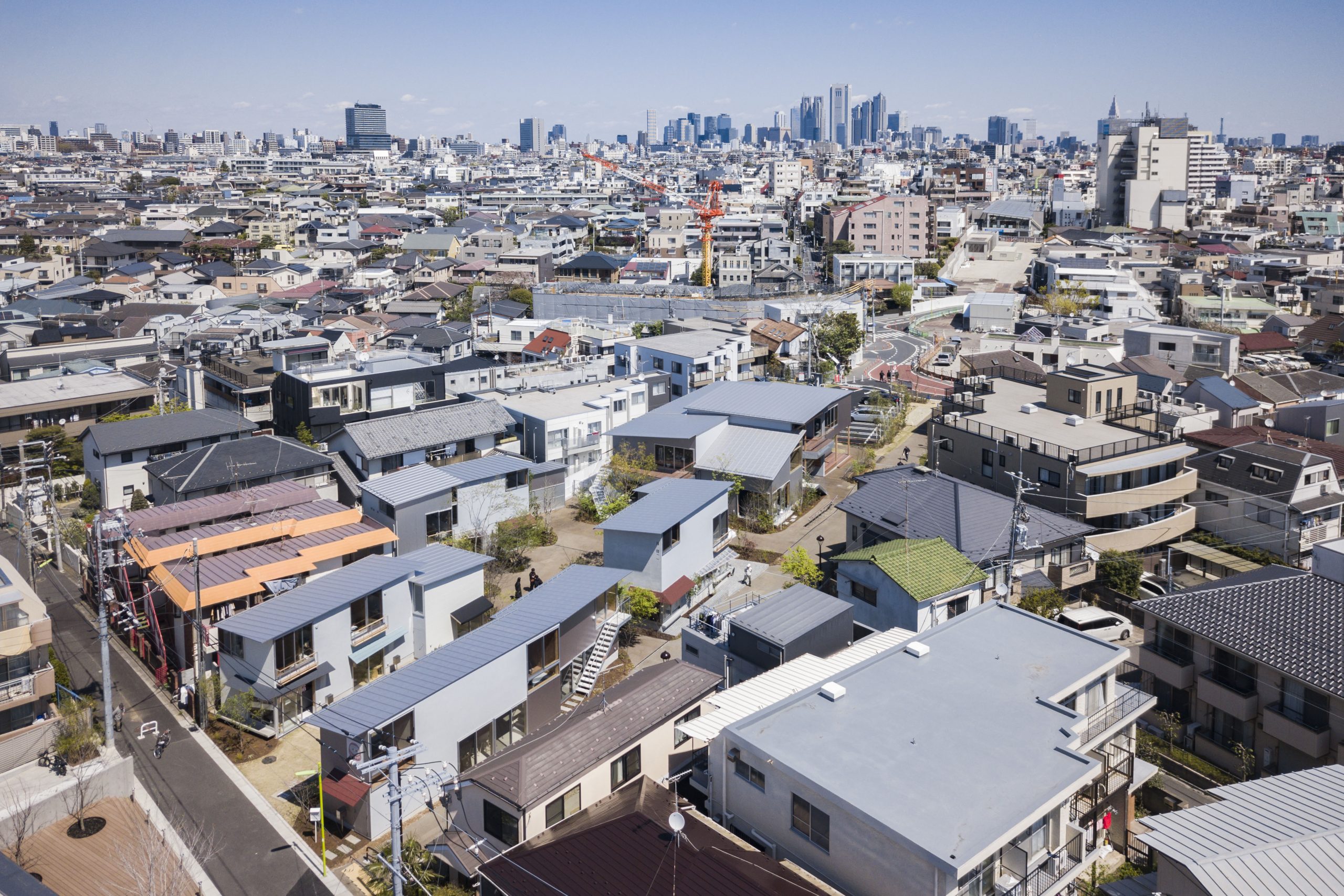
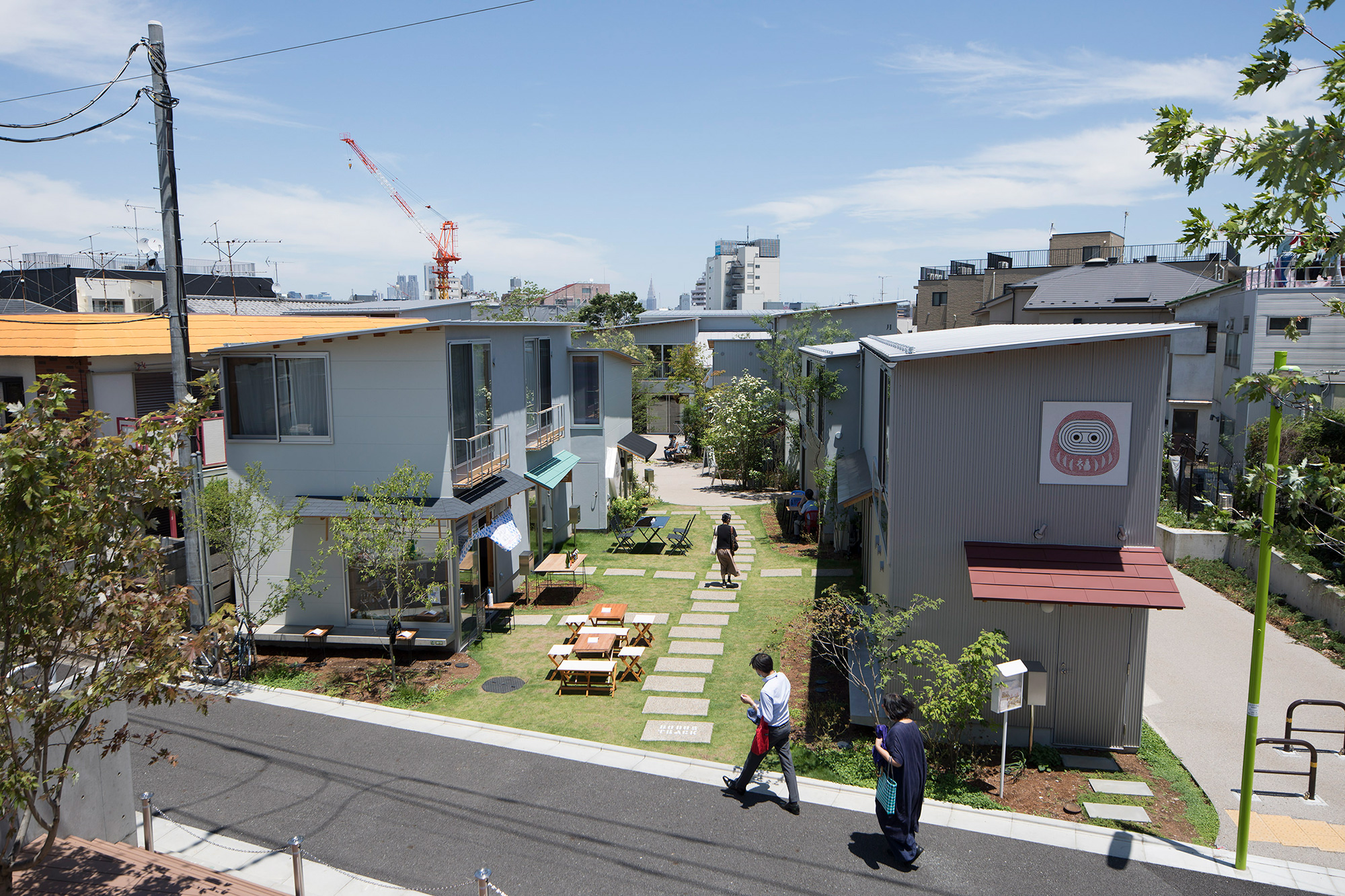
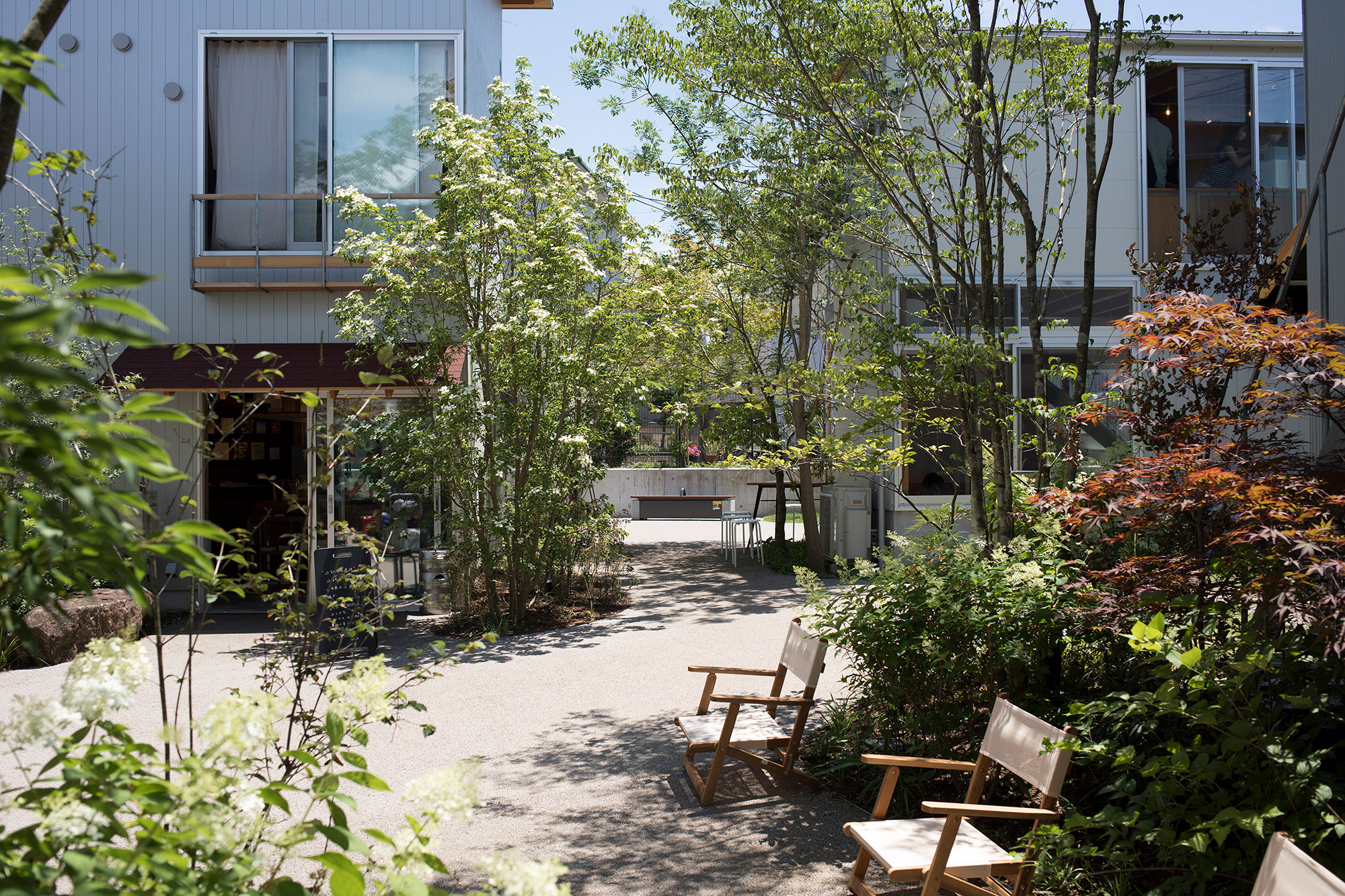
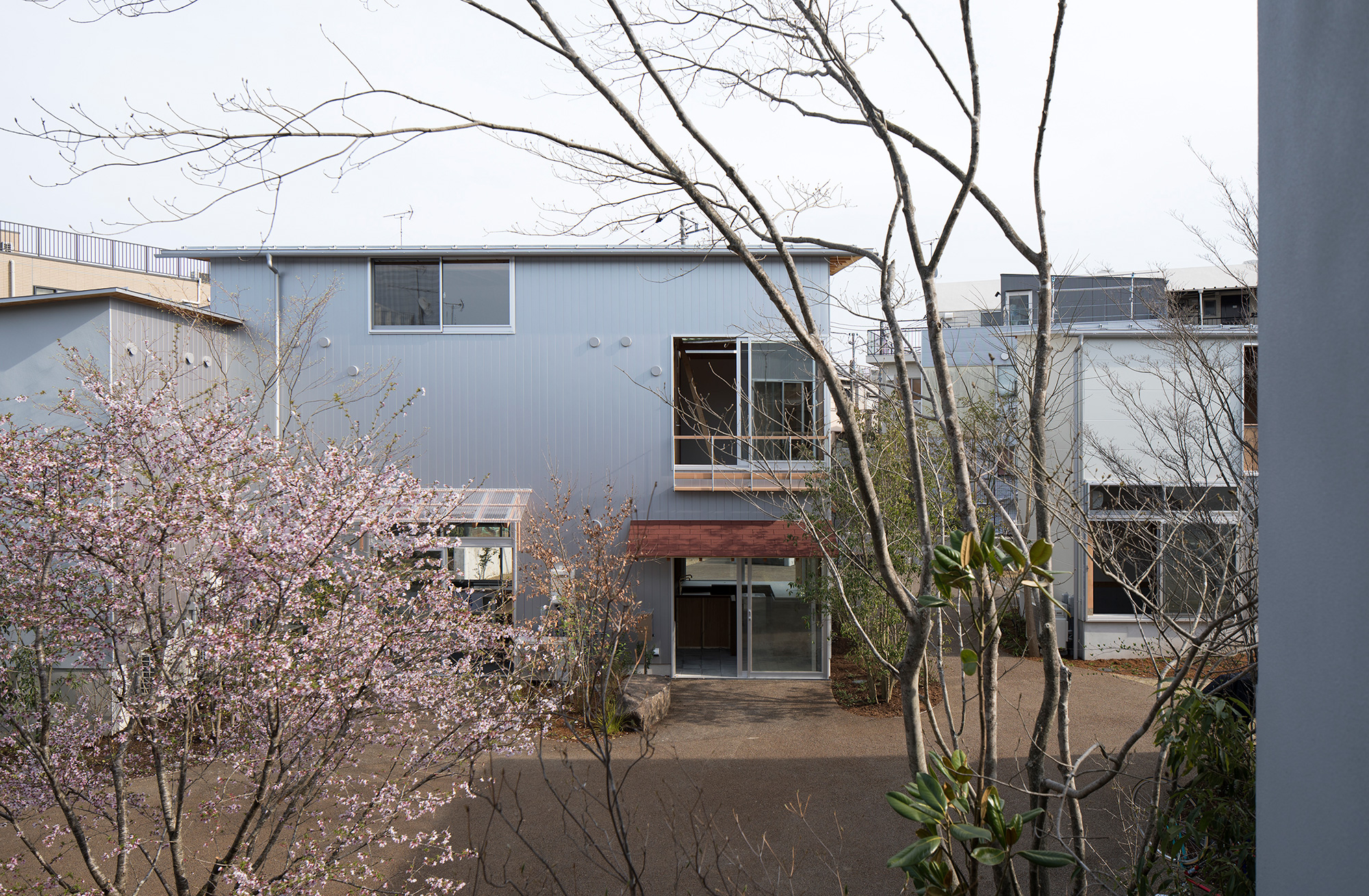
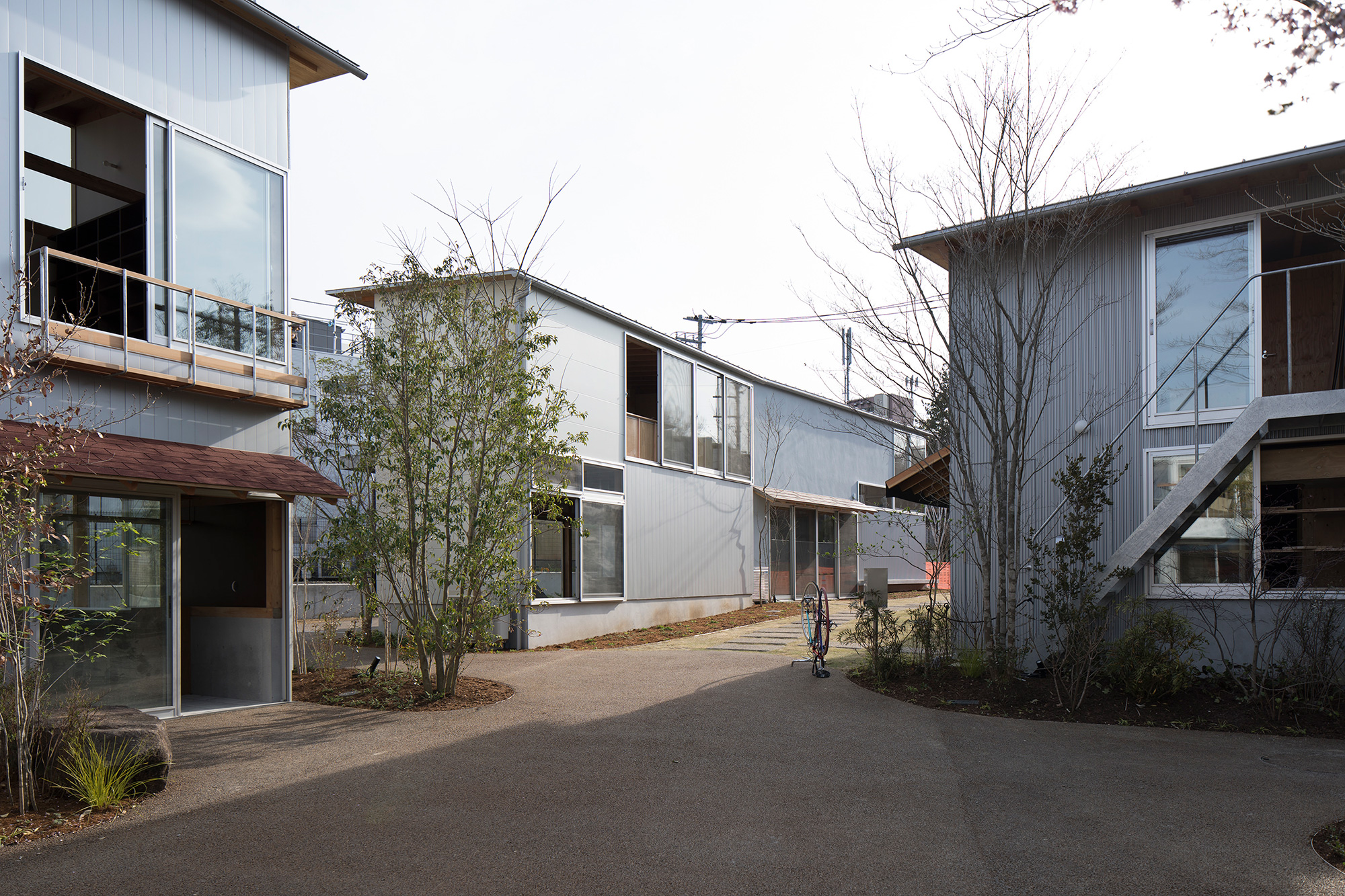
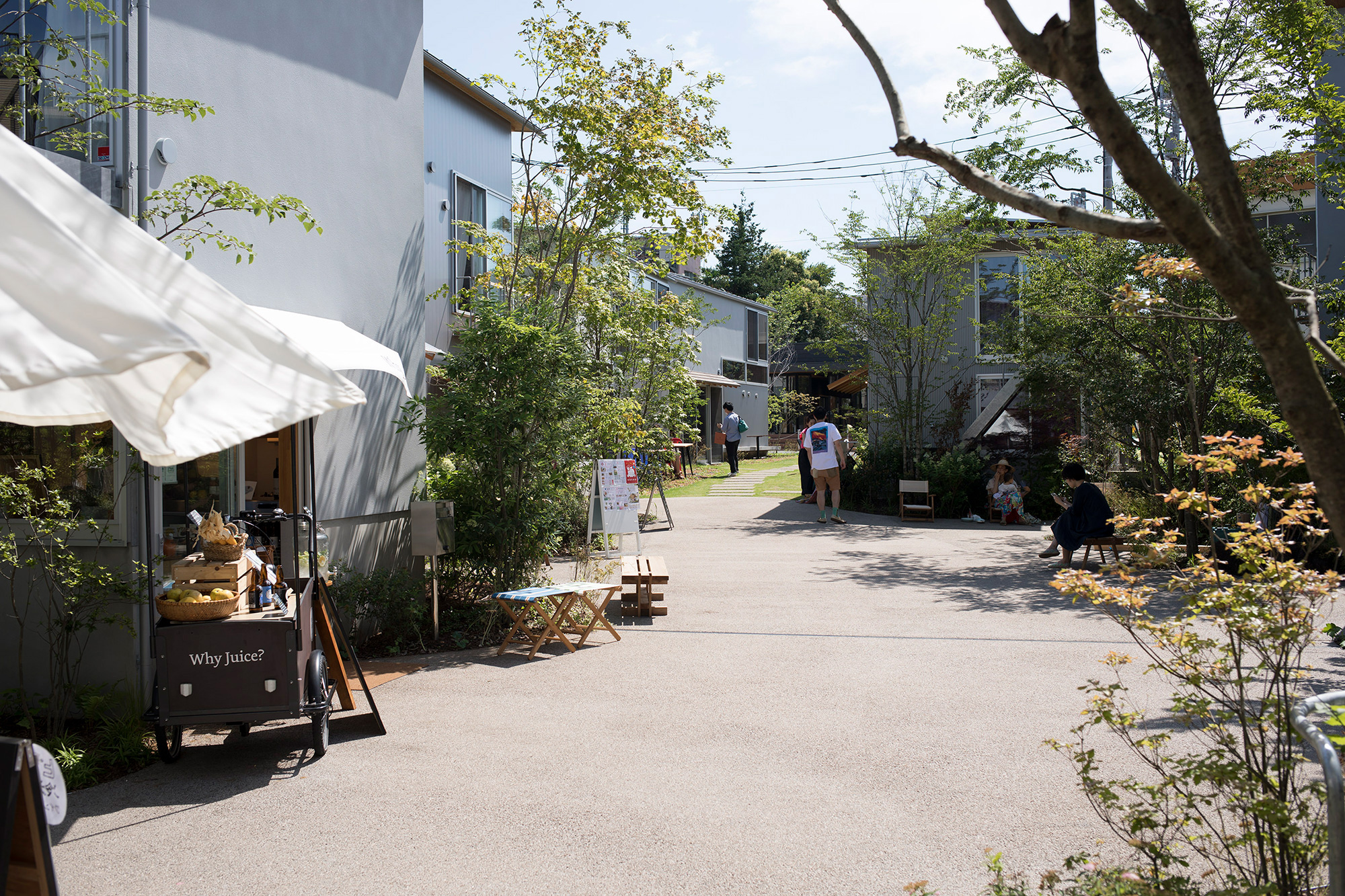
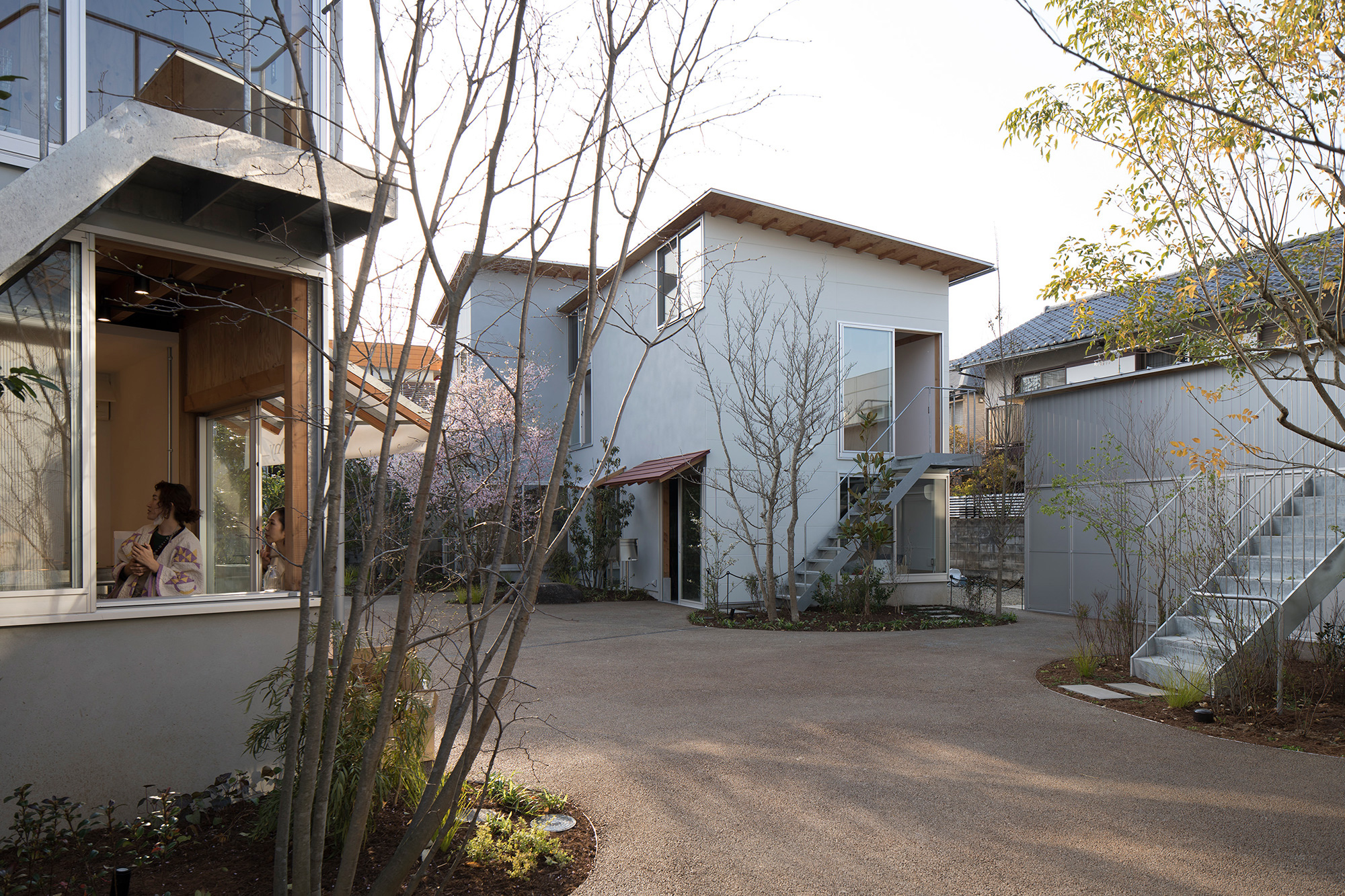
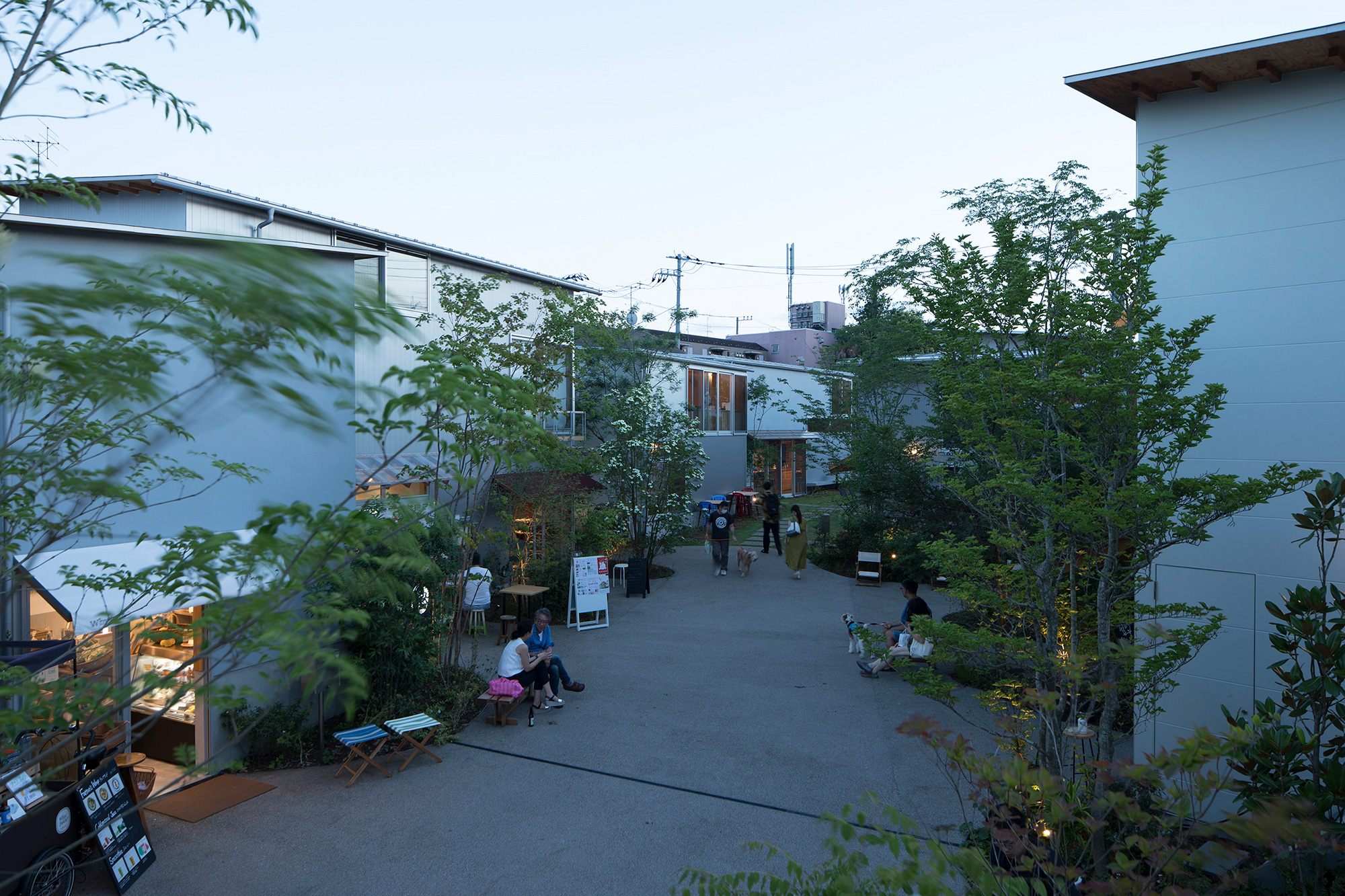
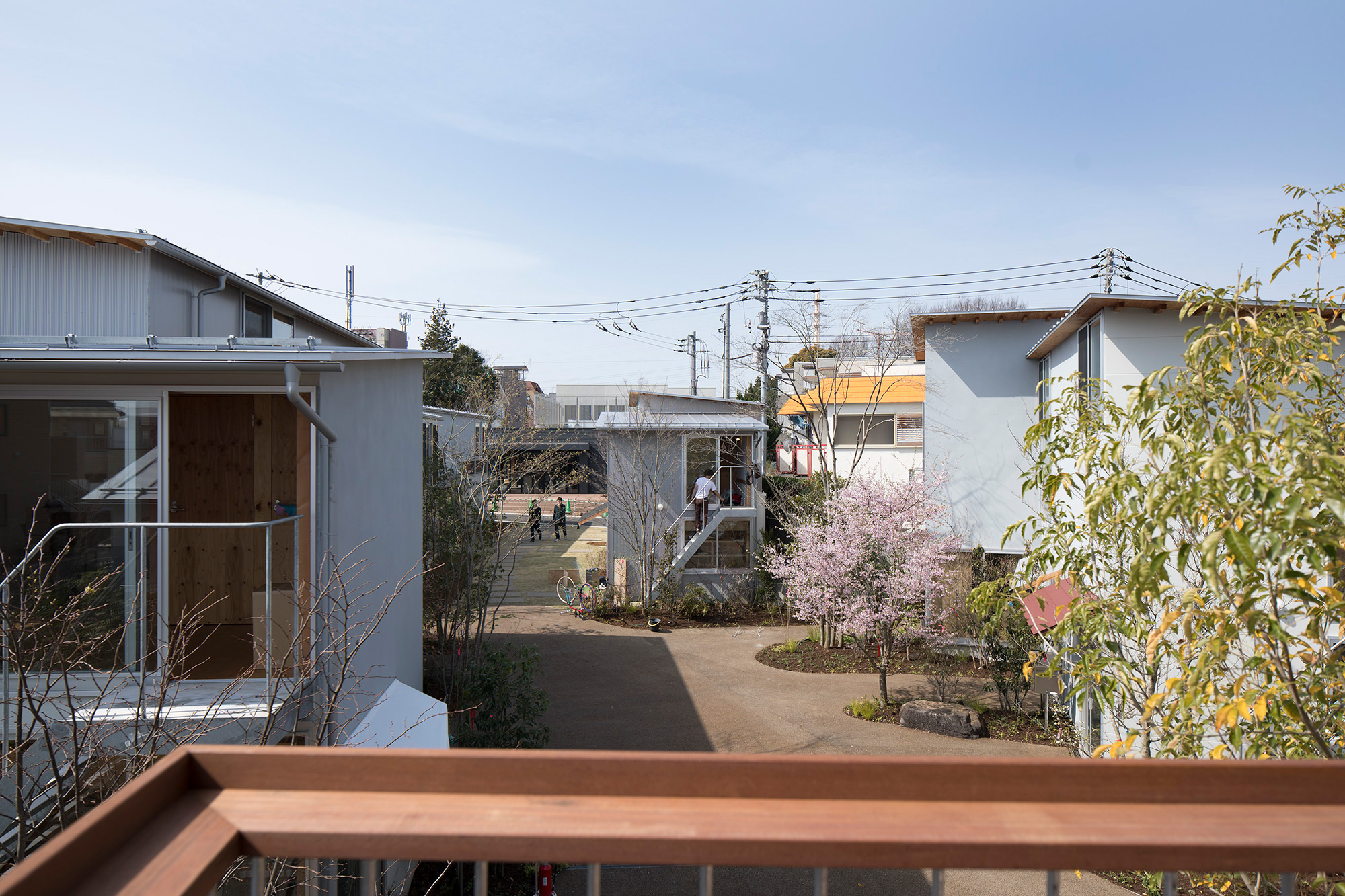
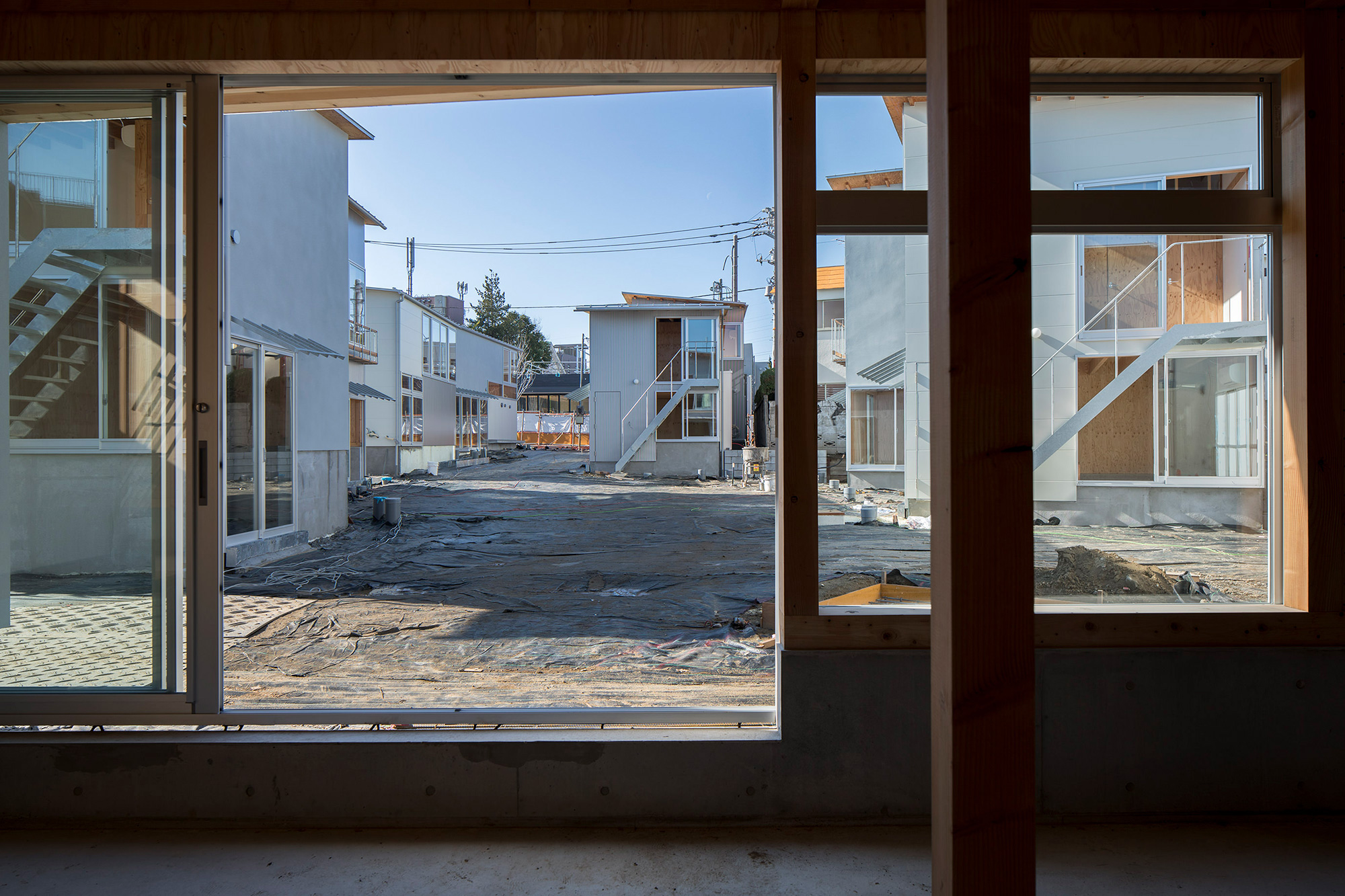
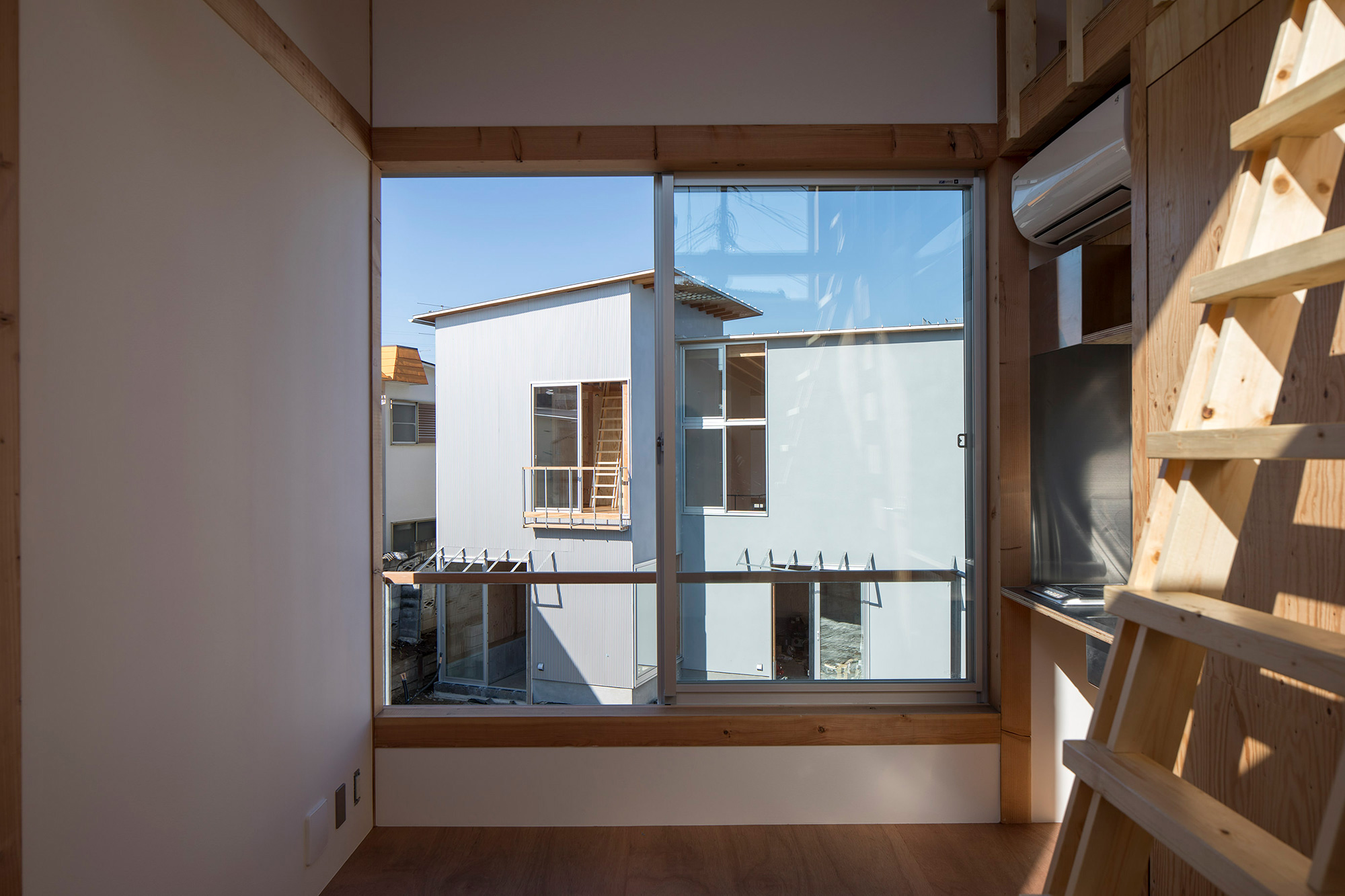
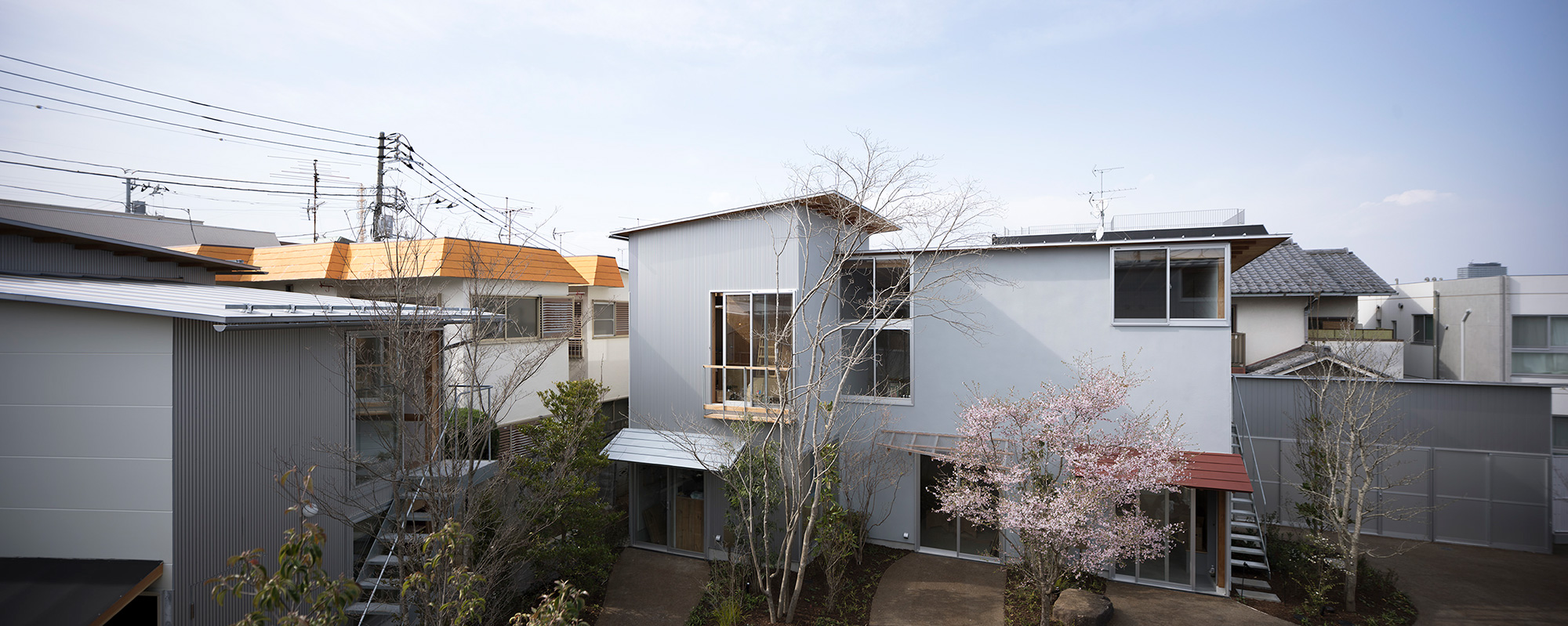
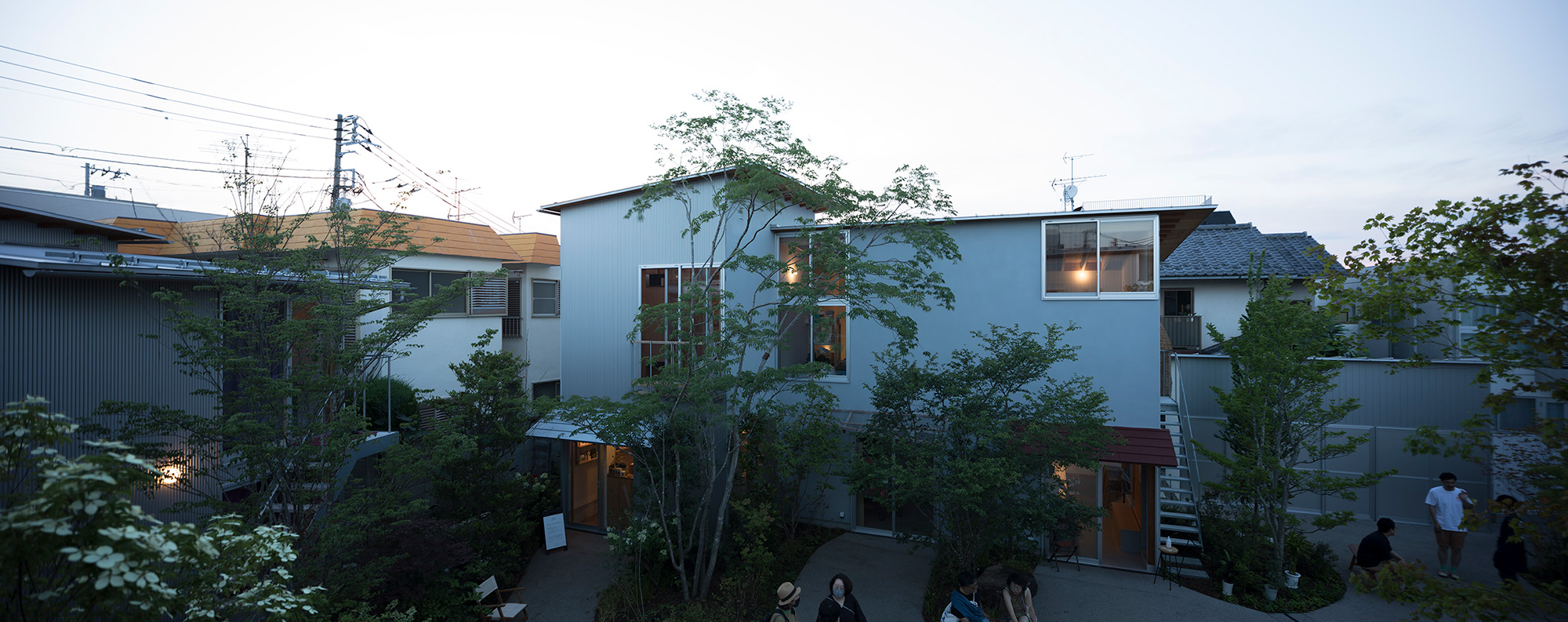
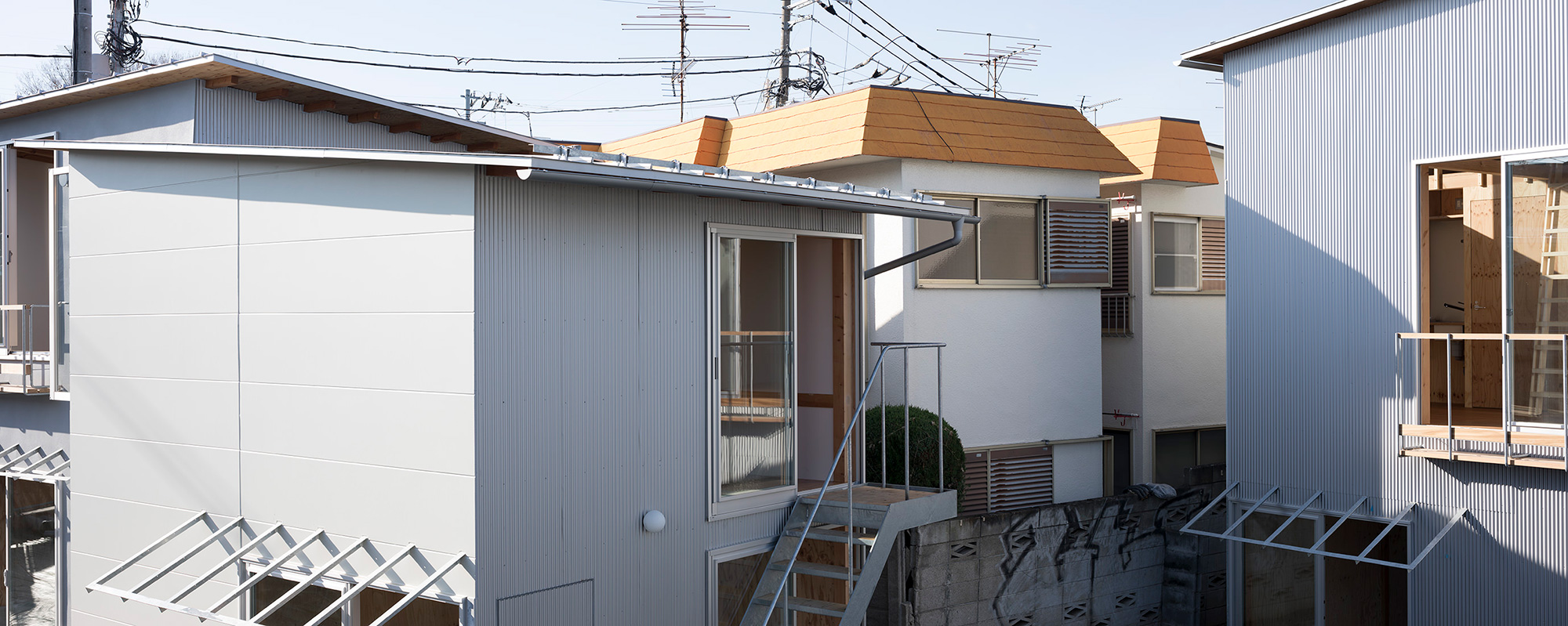
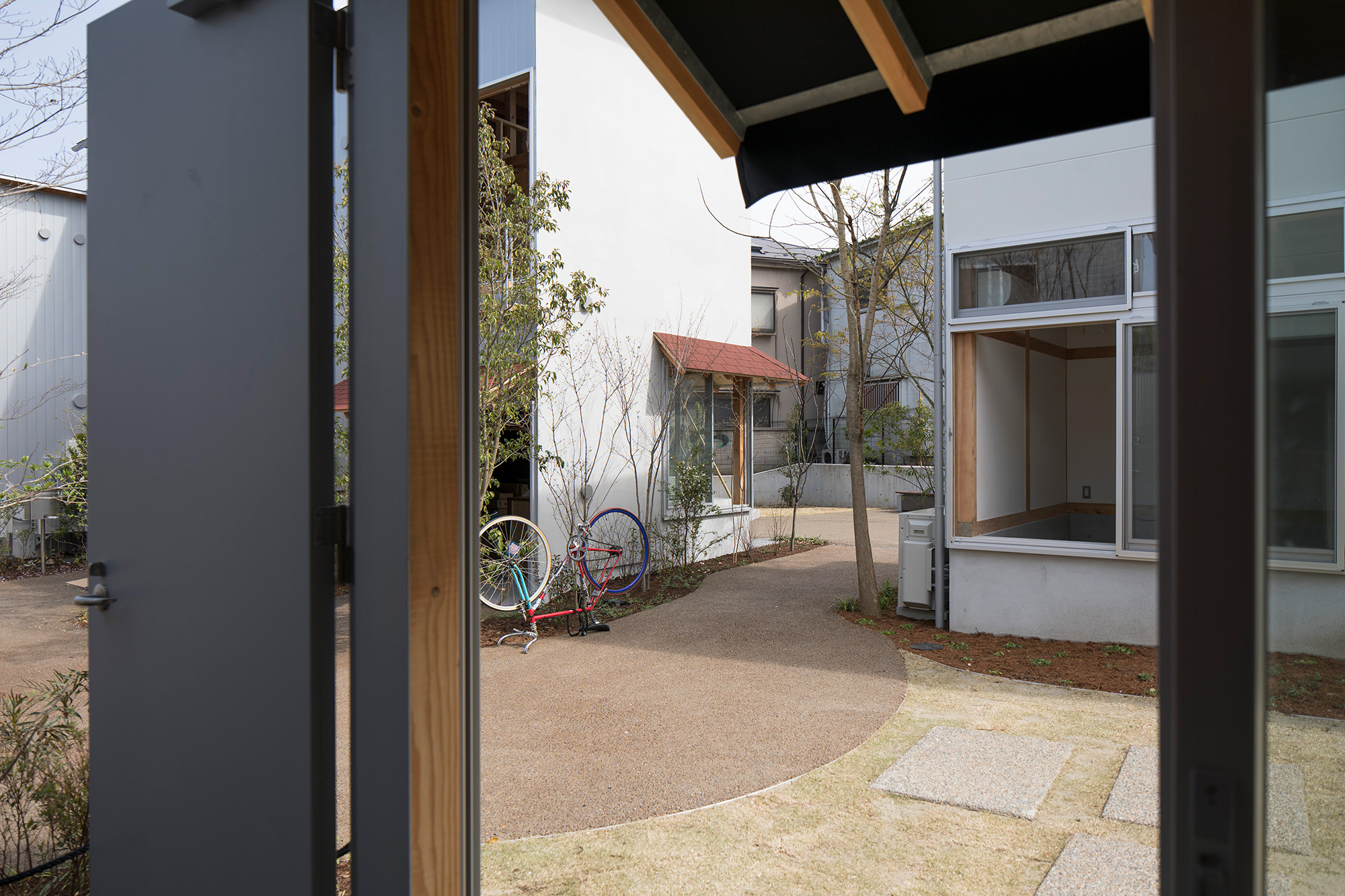
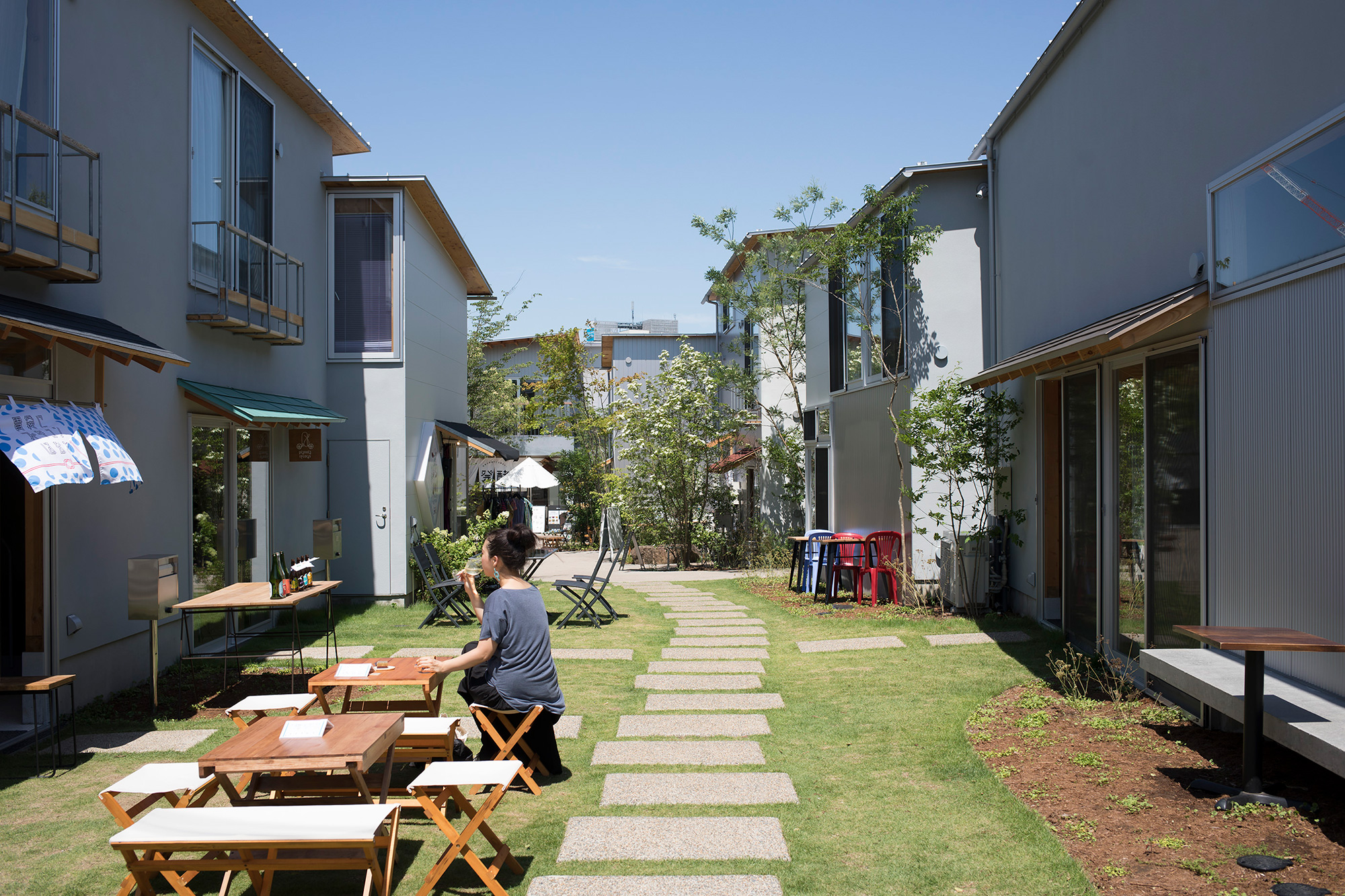
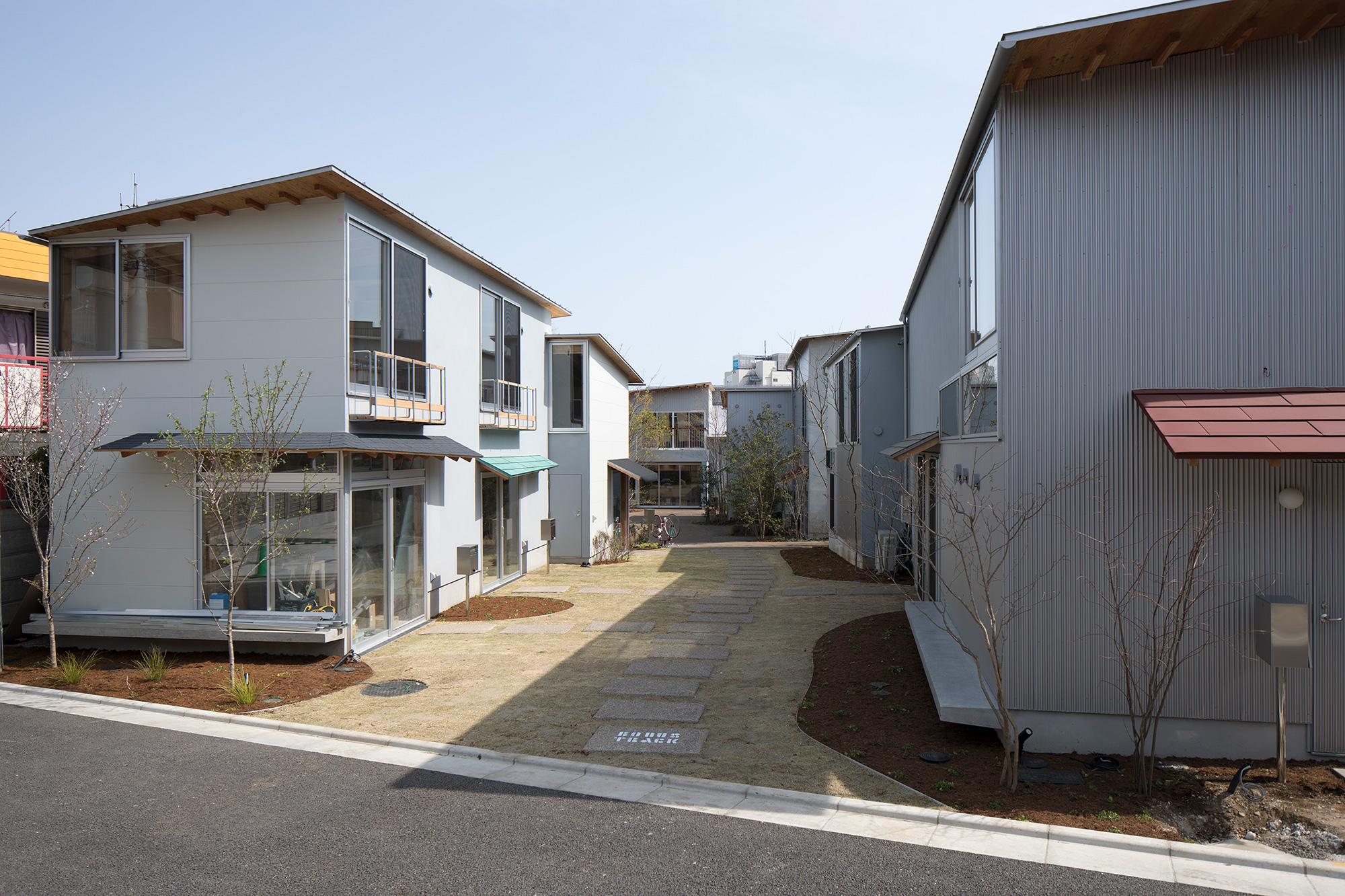
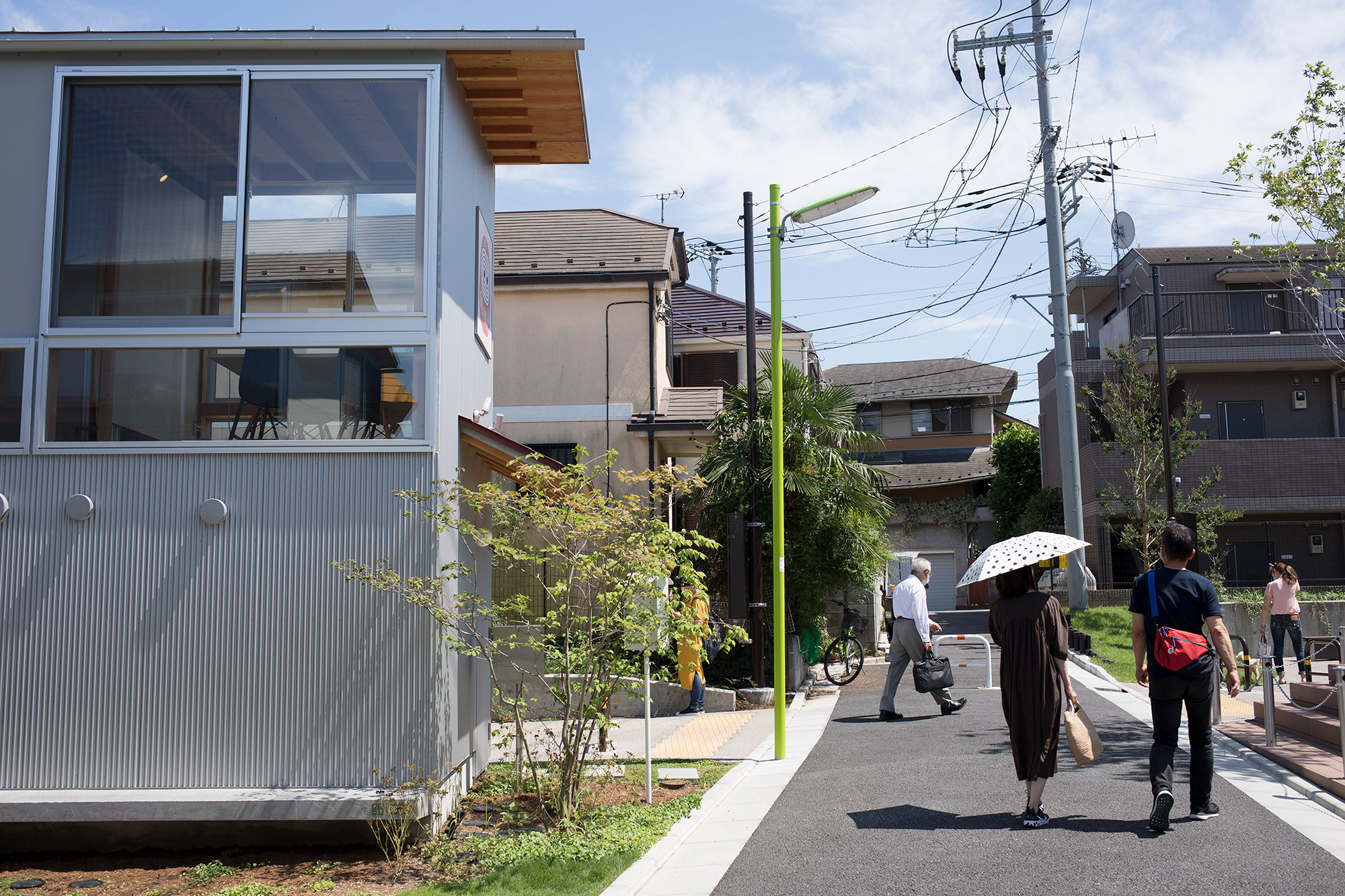
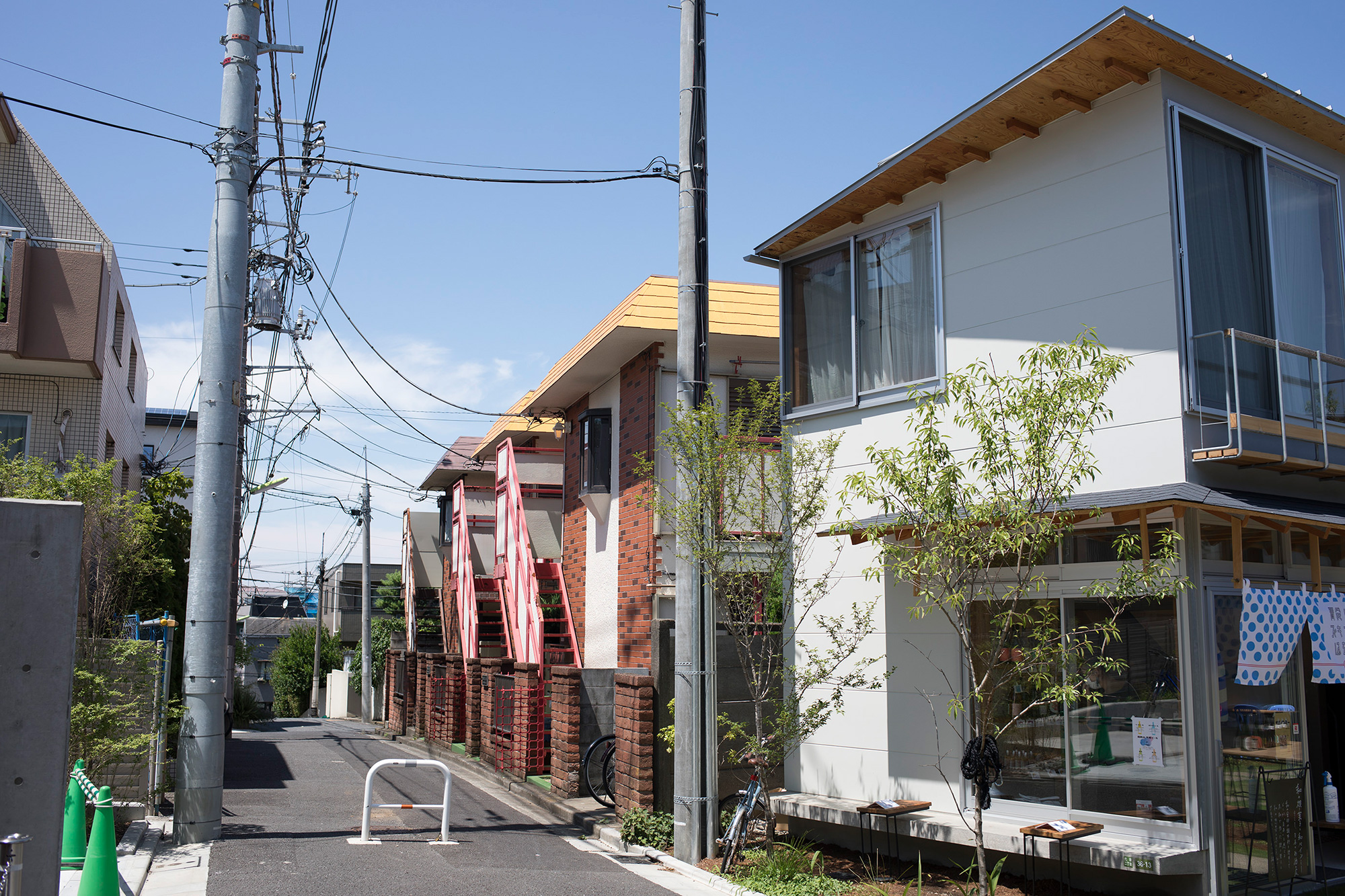
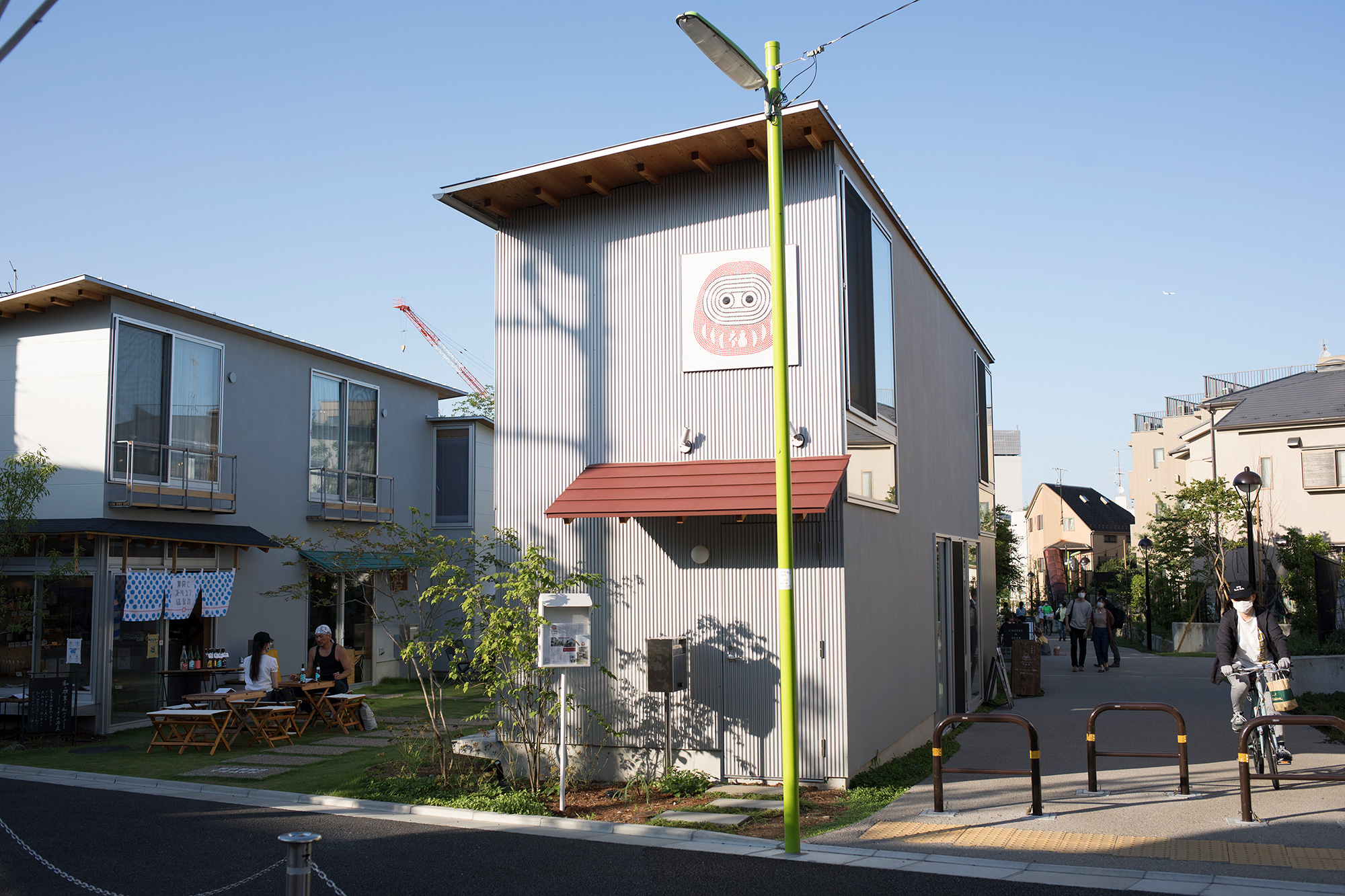
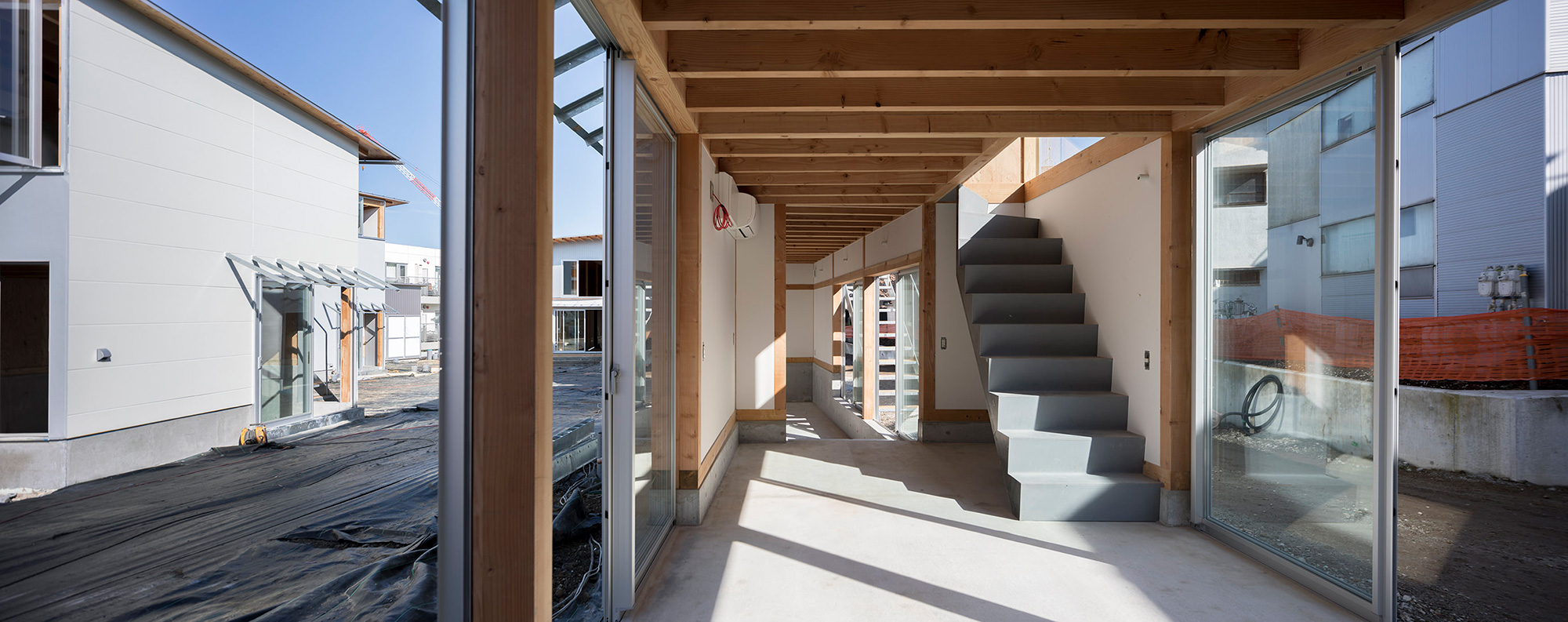
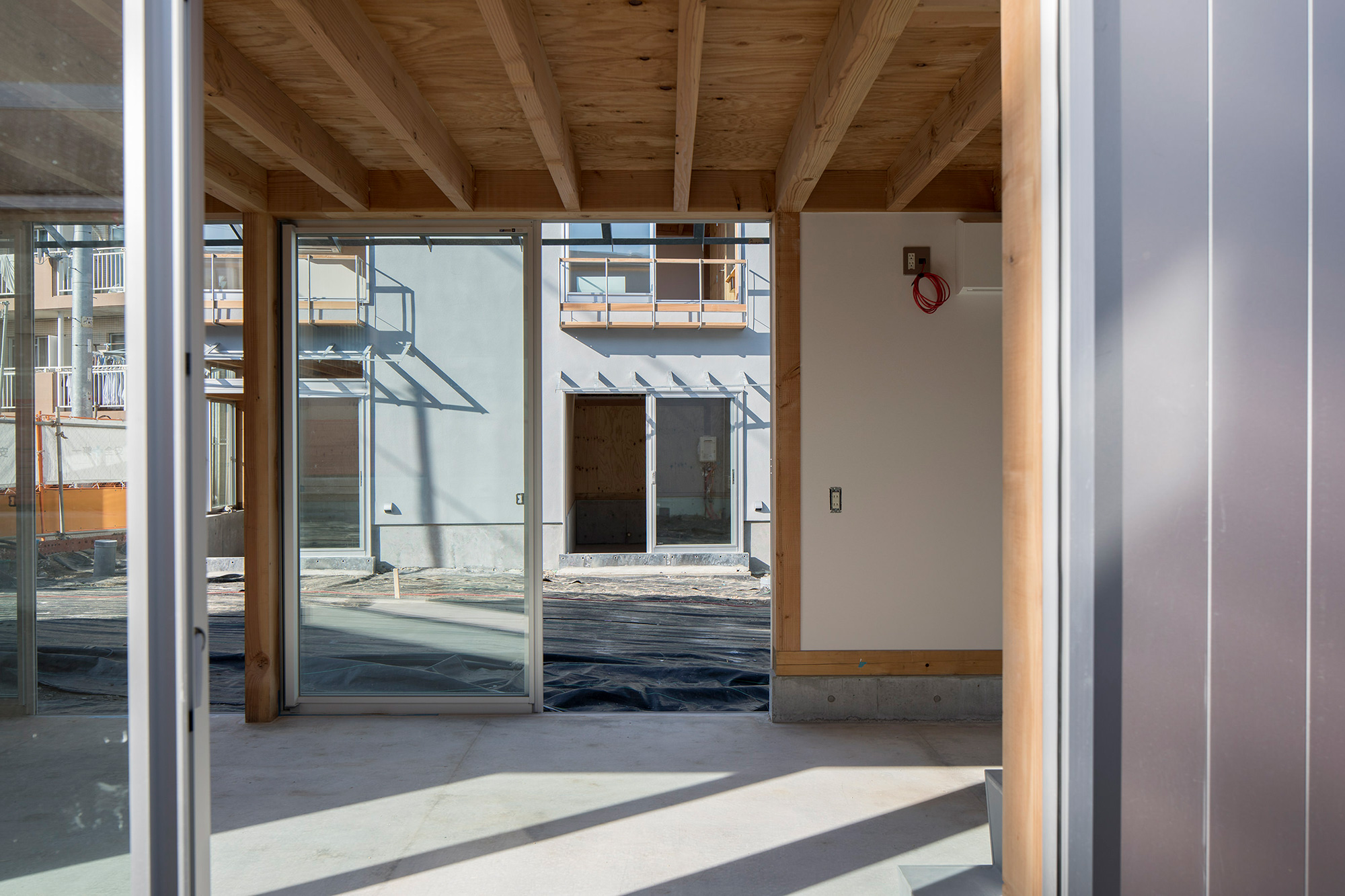
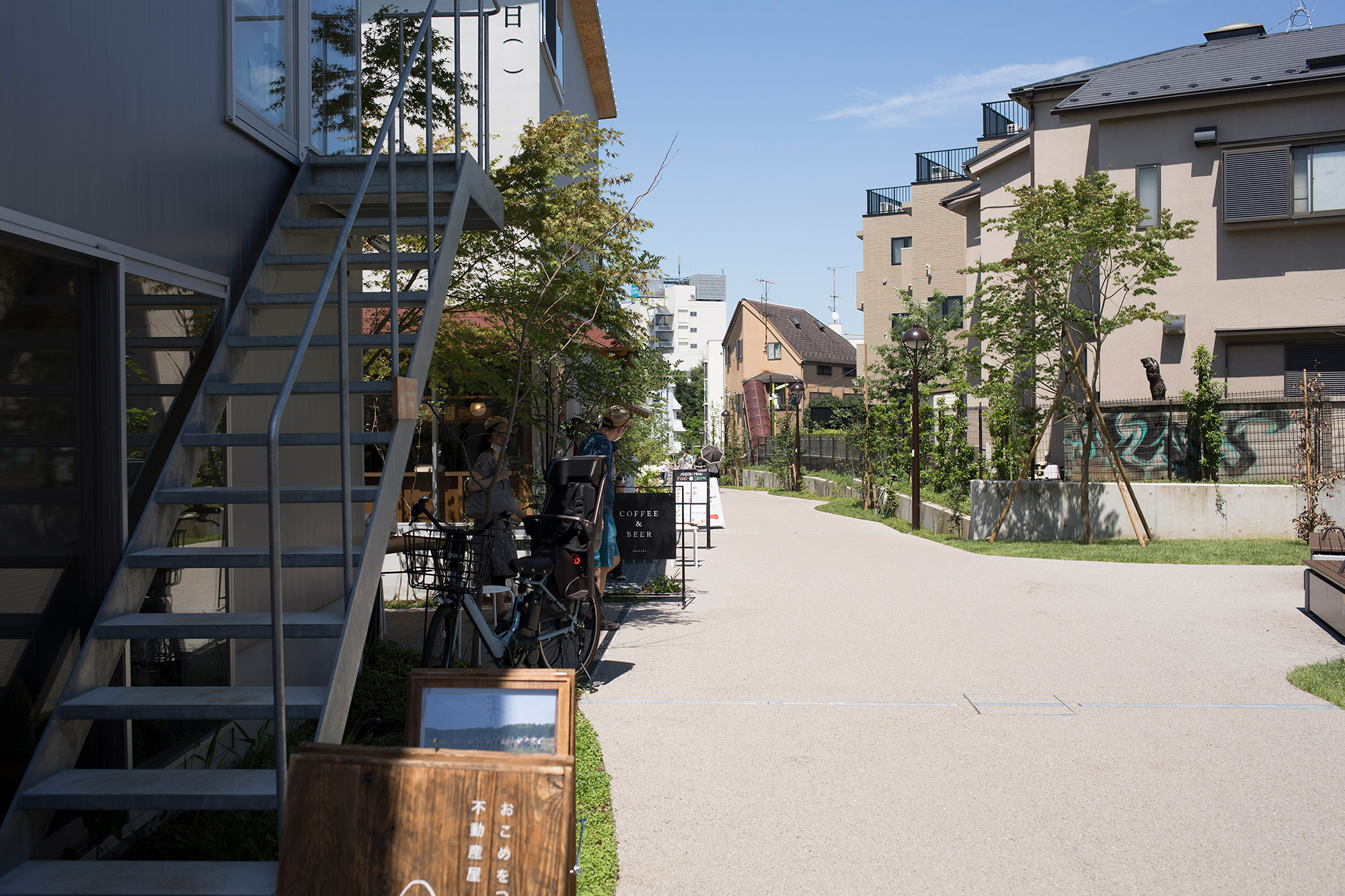
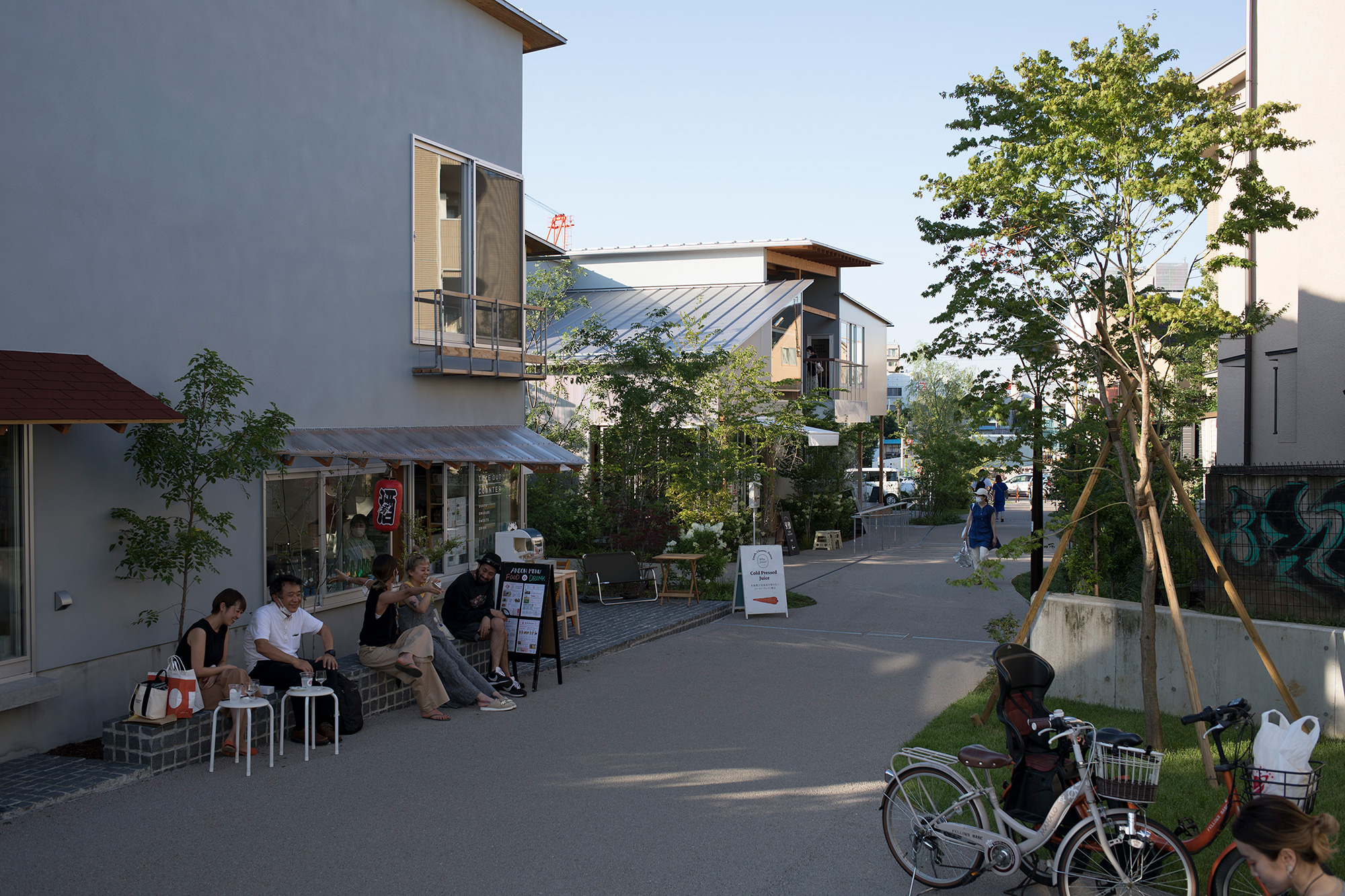
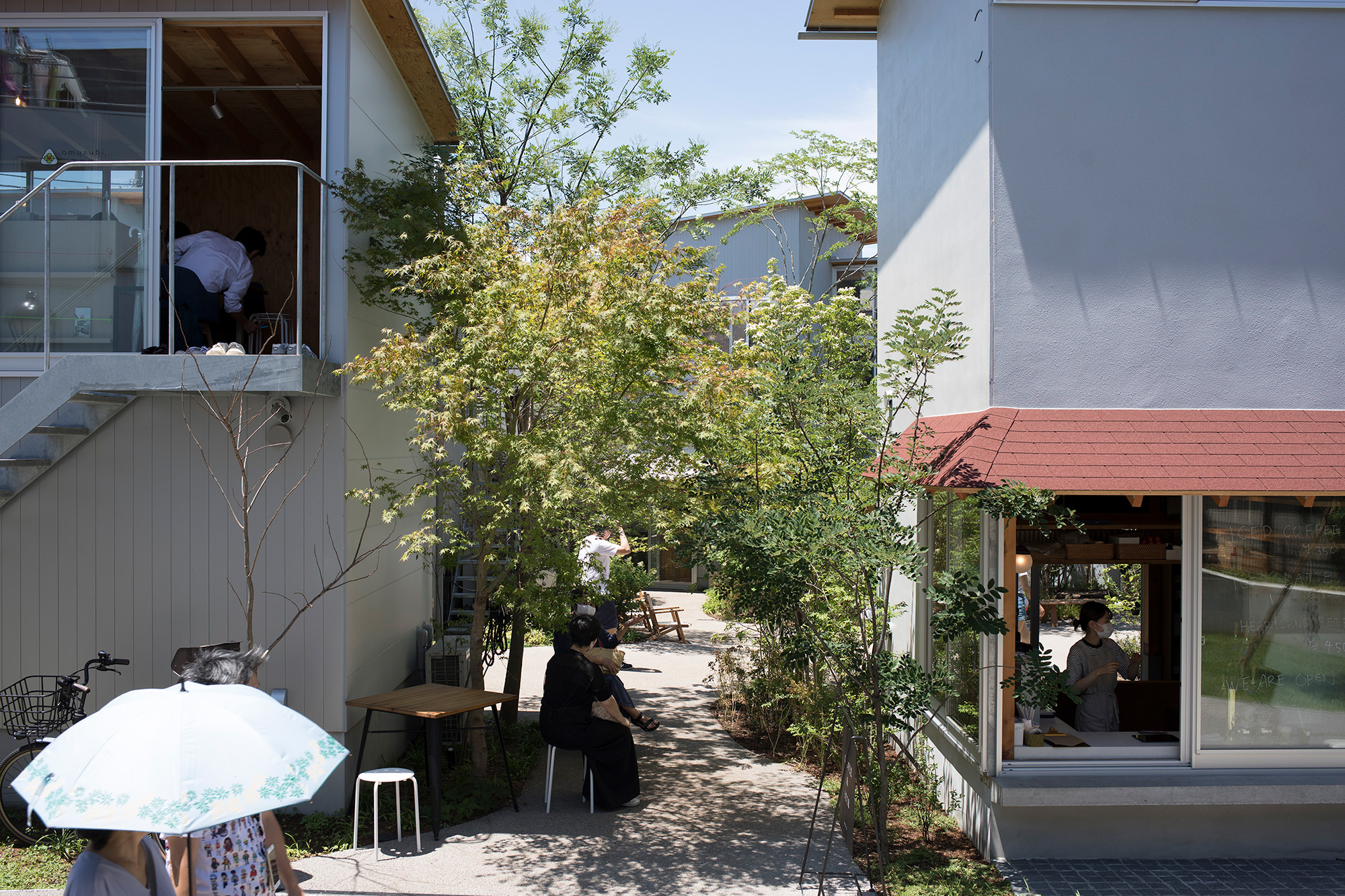
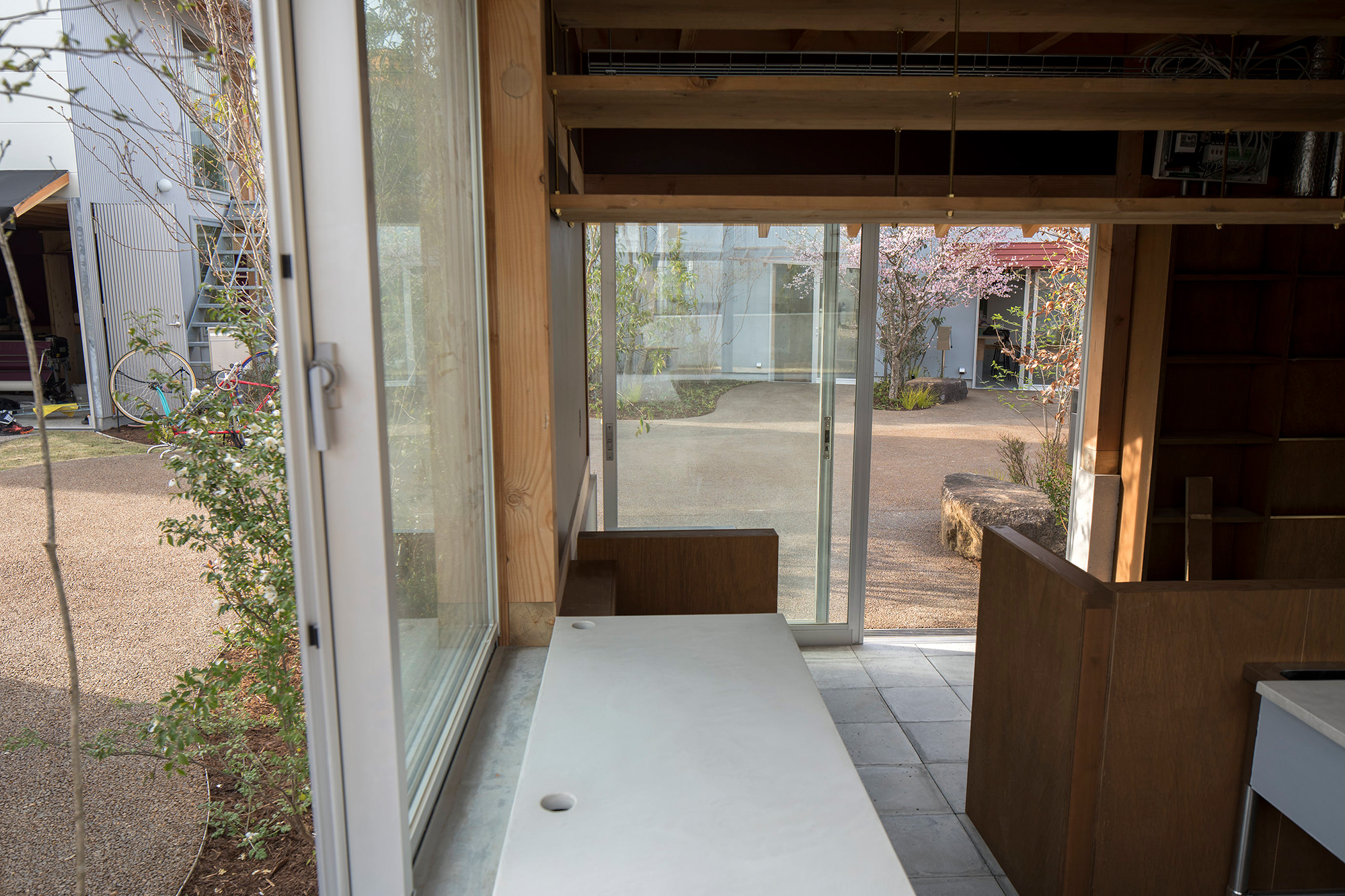
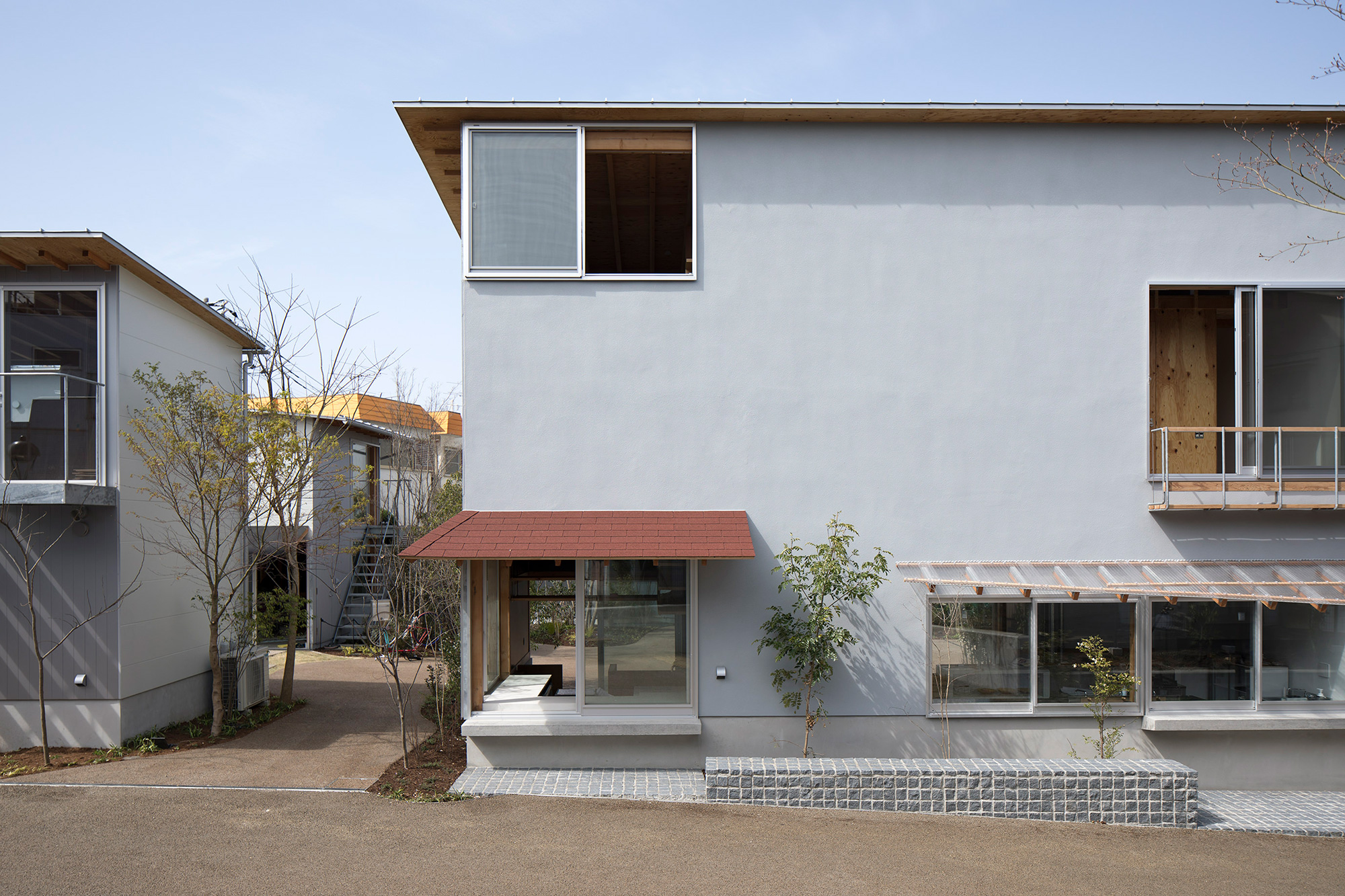
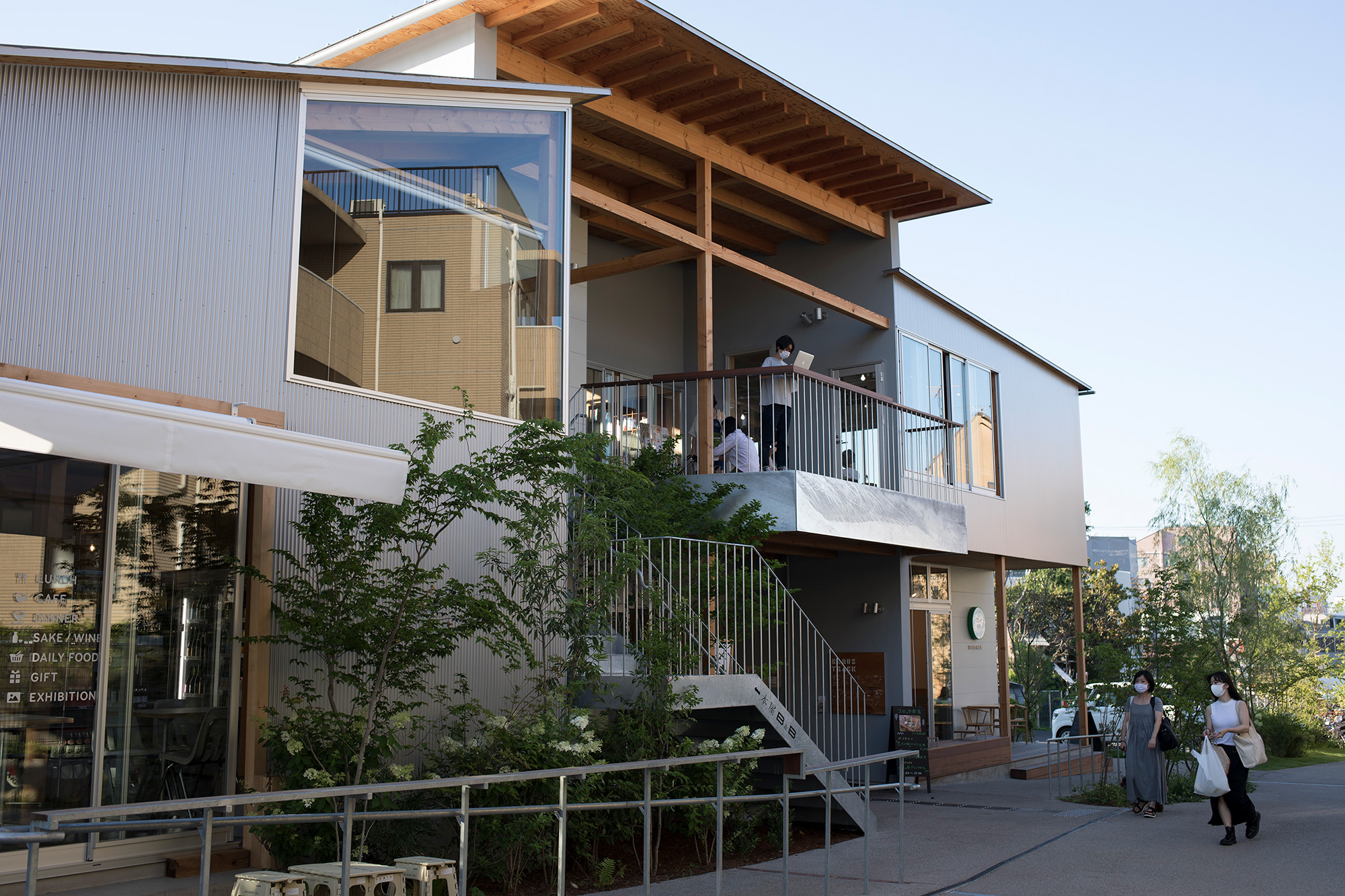
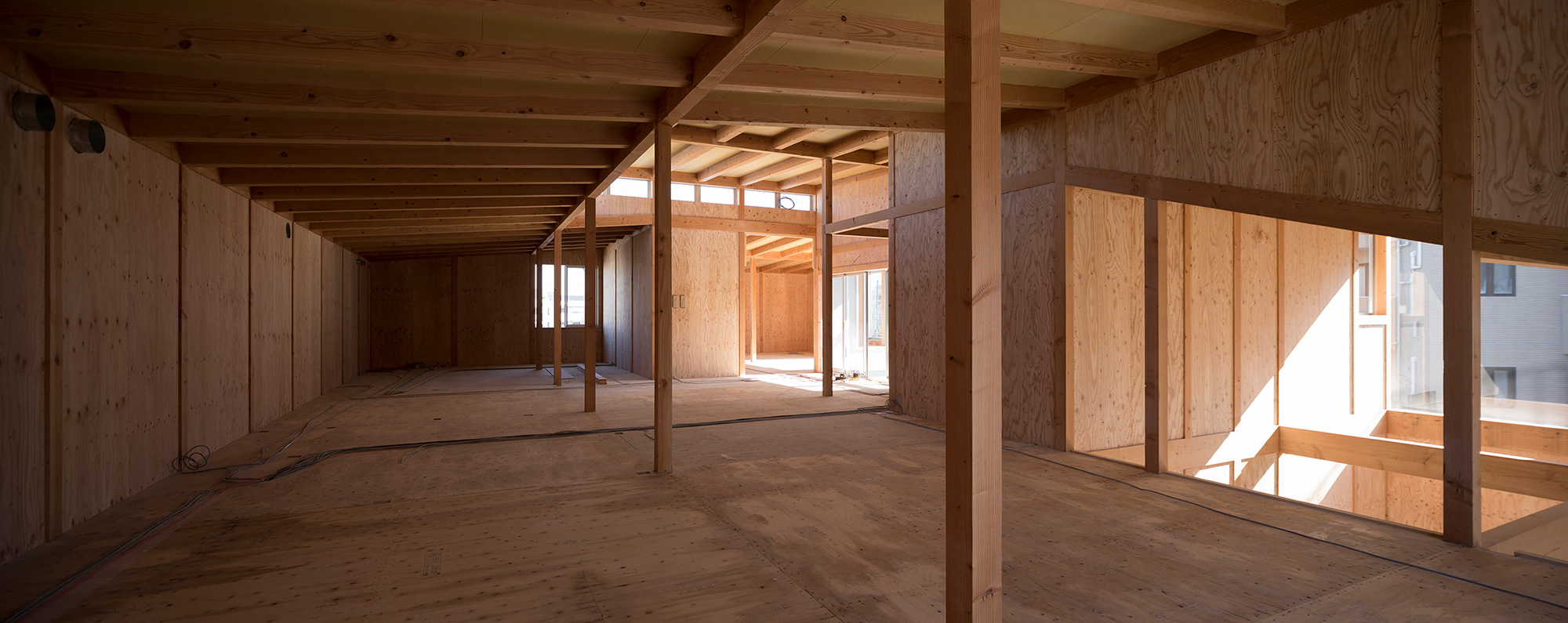
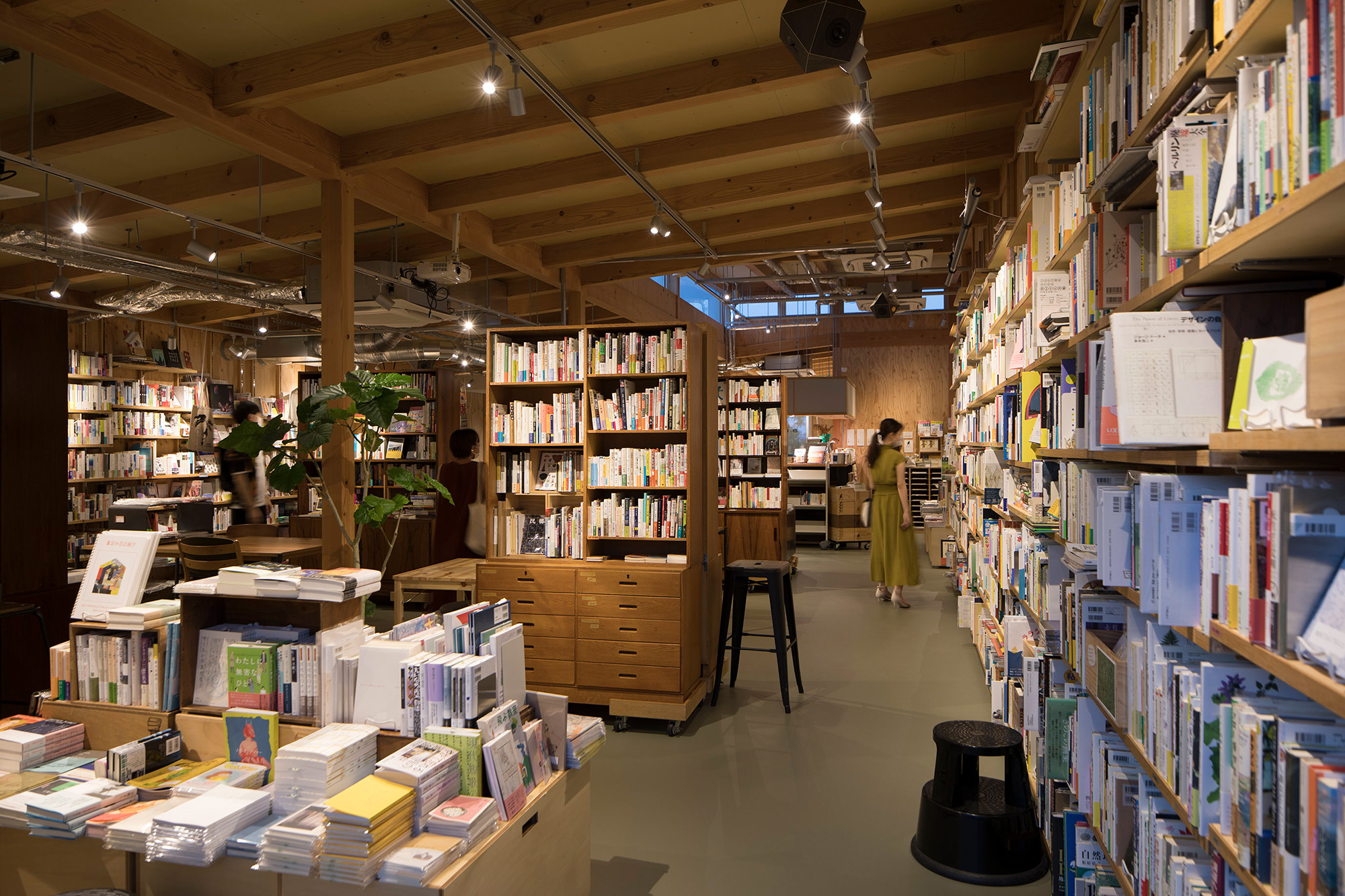
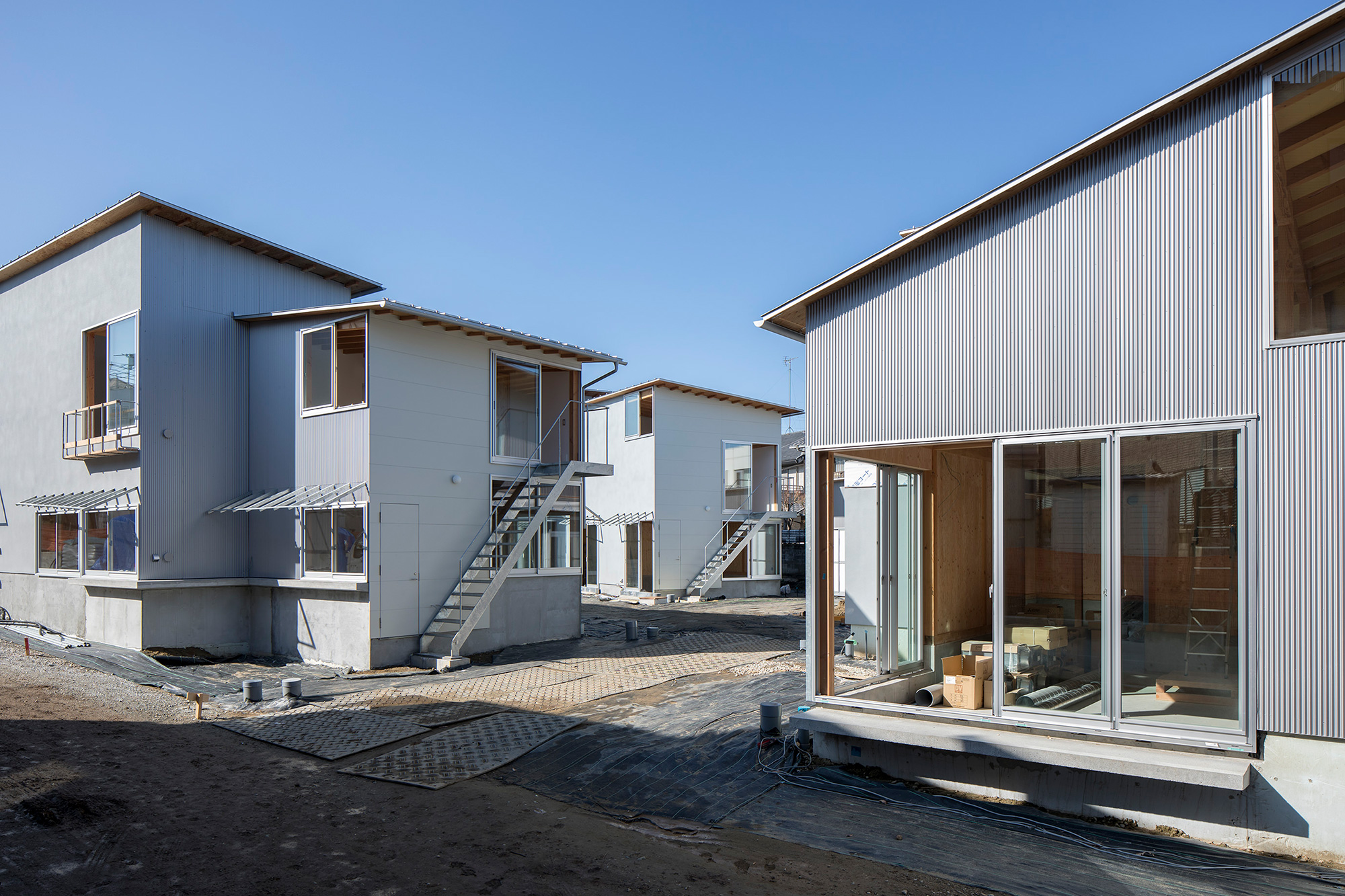
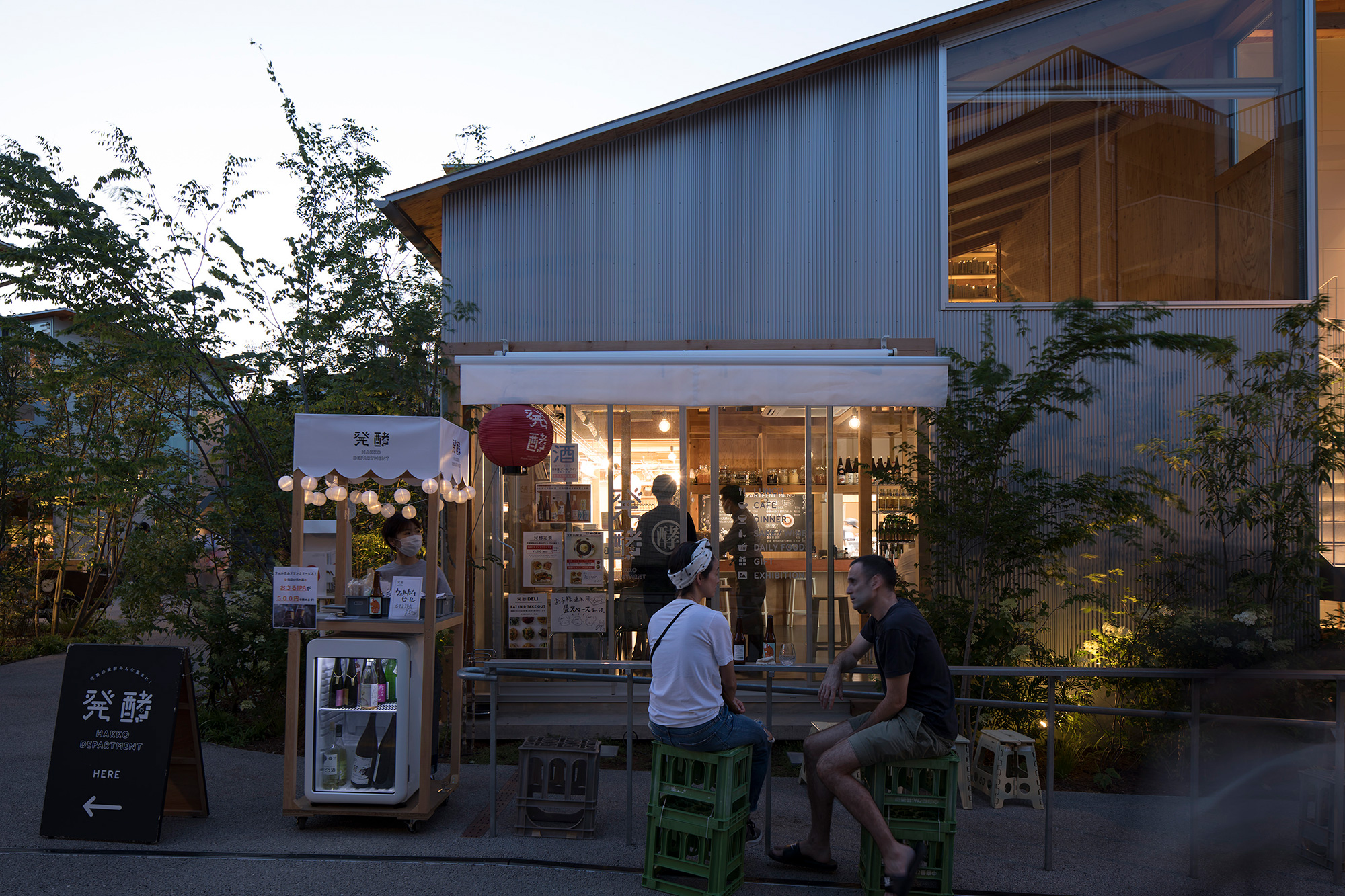
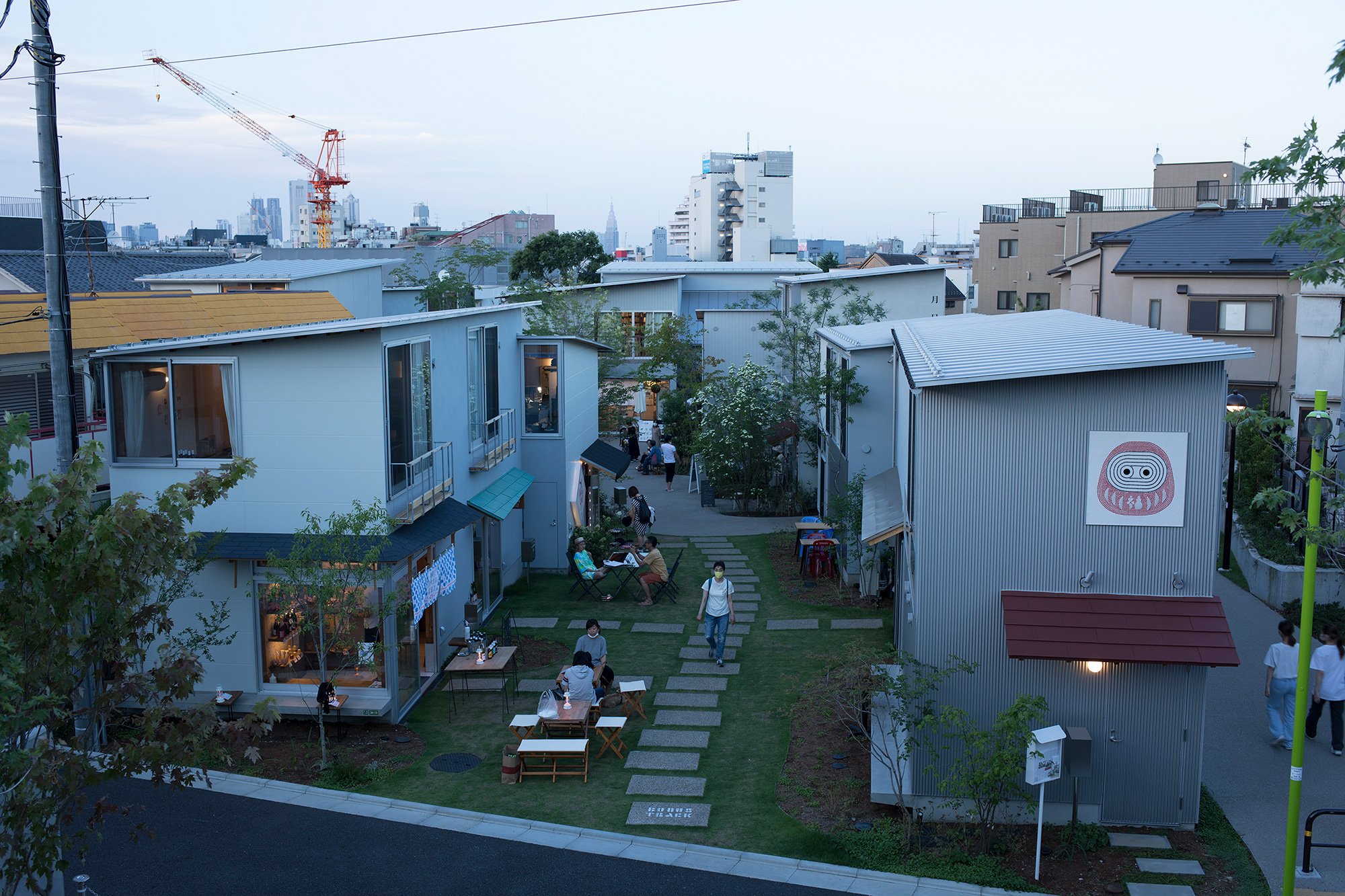
A New Shopping Street with a Familiar Feel
The neighborhood of Shimokitazawa has been known for its distinctive cityscape of narrow streets lined with characterful independent shops. However, it has recently been losing its individuality as rising rents are causing these shops to be replaced by chain stores. Bonus Track was a project to create a new shopping street that would help Shimokitazawa retain its character by providing an environment conducive for individuals to start small shops on a stretch of land that was freed when the tracks of the Odakyu Railway were relocated underground.
Units Configured for Small Retail
We developed the project by searching for a good balance between the floor areas and rents of the tenant units to make it easy for independent owners to maintain a shop. What we settled on were approximately 33-square-meter dual-use units composed of a shop and residence of roughly 16.5 square meters each. As a whole, the complex consists of four live-and-work buildings (SOHO Buildings) and one commercial facility (Central Building), and three of the SOHO Buildings are designed as row houses formed by linking three of the shophouse units. The Central Building contains 50- to 140-square-meter spaces of varying volume, in addition to a shared gallery, common lounge, restrooms, and waste area, which serve to support the functionality of the smaller shops.
49% Marginal Spaces
We coupled the shops with residences not only to make the units easier for shop owners to rent but also because we believed that the tenants would be more likely to contribute towards nurturing the project site as a whole if they developed a sense of ownership through living on it. Moreover, doing so allowed us to set aside 49 percent of the residential site for uses other than housing. Having this much marginal space to utilize opened the possibility for us to drastically transform the environment of the site and its surroundings. This strategy in particular has established Bonus Track as a model for how projects can be developed to activate underused real estate around them.
Built to Invite Change
We wanted to create a place that would grow and develop through being continually worked on by the shop owners themselves, much in the same way as Shimokitazawa’s characteristic streetscapes. In order to achieve this, we set up the buildings to be easily modified and worked out procedures for doing so. For instance, we gave the buildings fragmented shed roofs, broken-up exterior walls, and interiors with exposed structural elements so that they would not appear to be finished, untouchable objects, and we also scattered a variety of customizable elements throughout the site, such as counters, wall surfaces, and awnings that invite redecoration. Furthermore, as part of our area management strategy, we acted in the role of interior design supervisors and encouraged the tenants to actively make changes by clearly laying out for them the ways in which they might do so.
A Green Space for the Community
Members of the local community had been voicing their desire for more green spaces in the neighborhood for some time. This led us to adopt the concept to create “a shopping street in the woods” by incorporating plenty of greenery in the landscaping plan. As the outdoor spaces do not belong to any one lease area, the shop tenants are allowed to set out furniture and signs in them as they wish. For the tenants, the green space thus serves as a shared garden that complements the small interiors of their units, while for the surrounding community, it serves as a park of sorts despite being on private land owned by the railway operator.
A Model for Post-Pandemic Urban Spaces
The modern city driven by economic rationalization and functional differentiation, the hallmarks of which include things such as business districts and bedroom communities predicated on the commuter lifestyle and commercial buildings optimized to maximize rentable floor areas, failed to function during the COVID-19 pandemic. Movements to redistribute urban functions and reconsider the environments in which we spend our daily lives will undoubtedly accelerate when the world emerges from the pandemic. Bonus Track, which we developed through discussing what our everyday environments could look like in the future, immediately was able to demonstrate its potential upon being completed in the spring of 2020, right when the state of emergency was declared in Japan. Despite the situation, the tenants were able to gradually open their shops by taking advantage of the live-and-work setup of their units and the ample open-air spaces. It also became a common sight to see members of the surrounding community visit the site on their walks and use it like a park.
Location:Setagaya, Tokyo, Japan
Category:Shophouses and commercial facility
Structure:Timber frame (2 stories)
Total floor area:907.4㎡
Design:Tsubame Architects
Structure design:Ohno Japan
Equipment design:EOS Plus/GN Facilities Planning
Landscape desgin:En Landscape Design
Sign design:Compound
Construction:Sanryo Construction Firm
Client:Odakyu Electric Railway
Completion:2020.4
photo:Takeshi Yamagishi
published:Shinkenchiku, May 2020 issue
Shōtenkenchiku, August 2020 issue